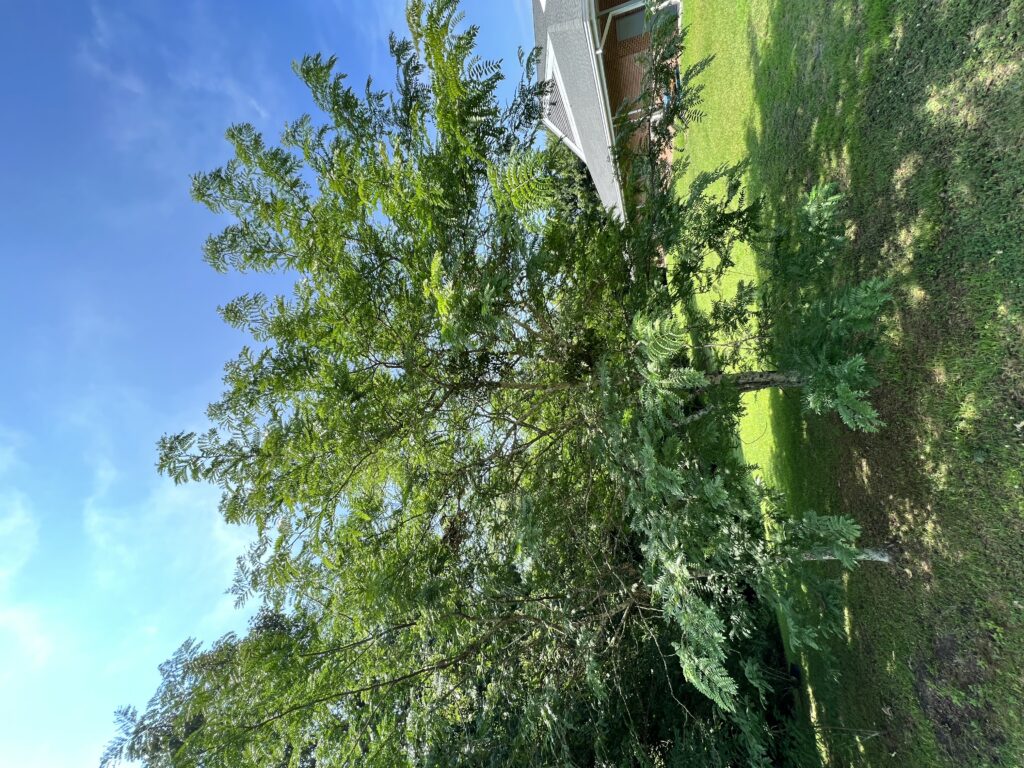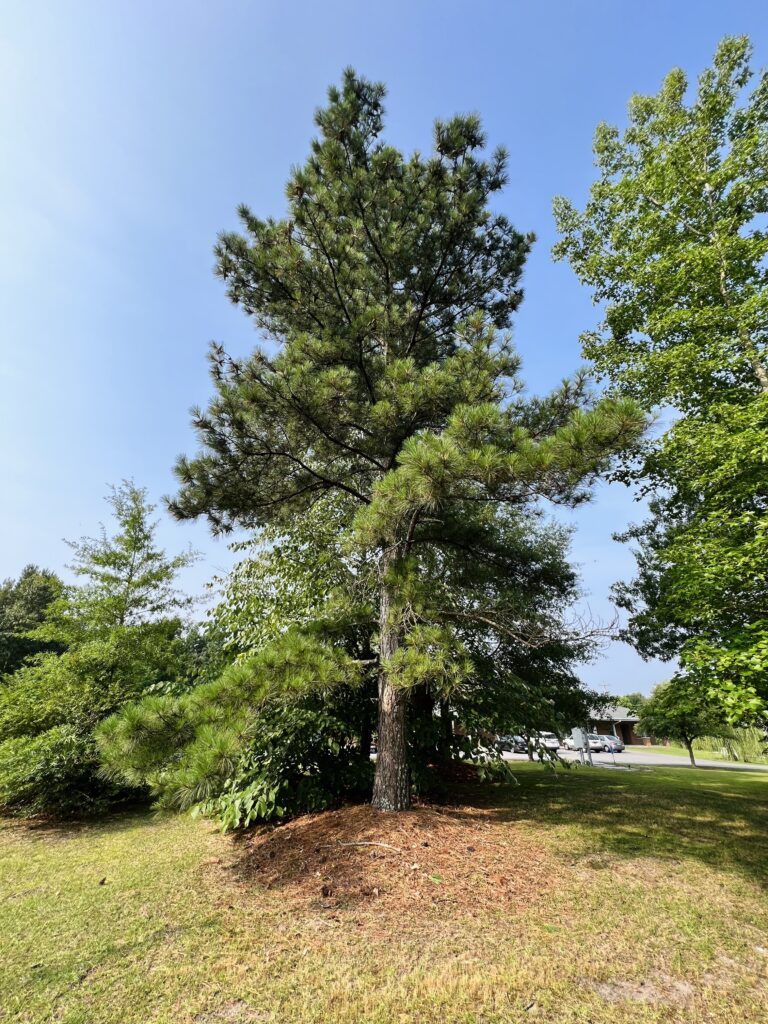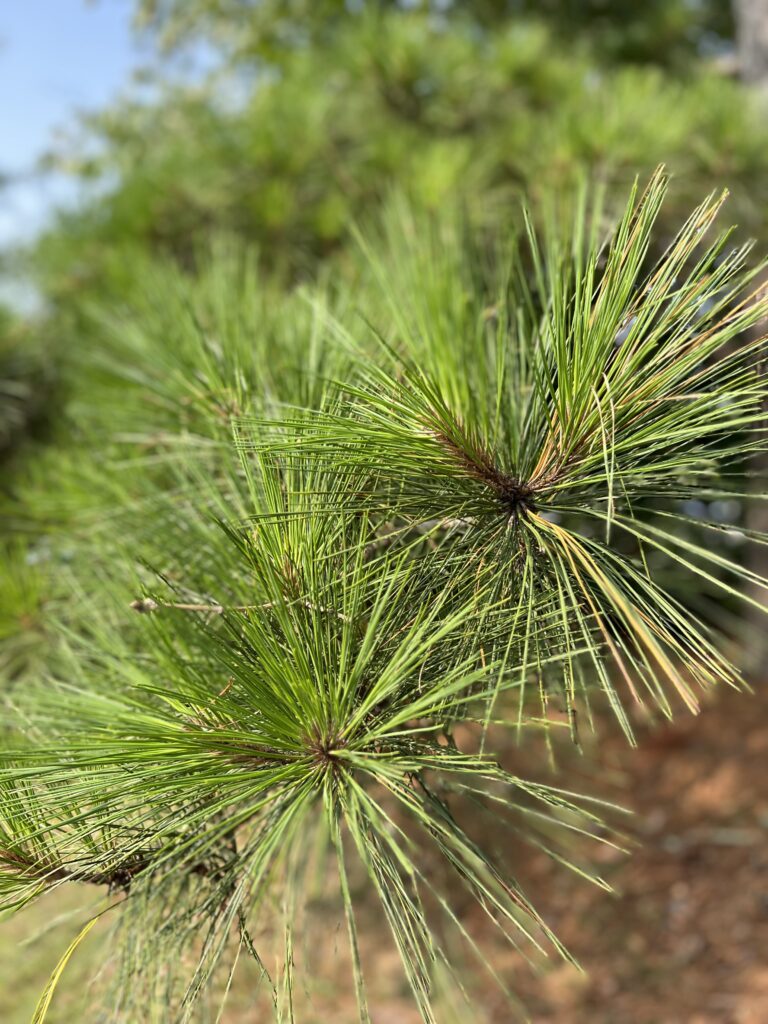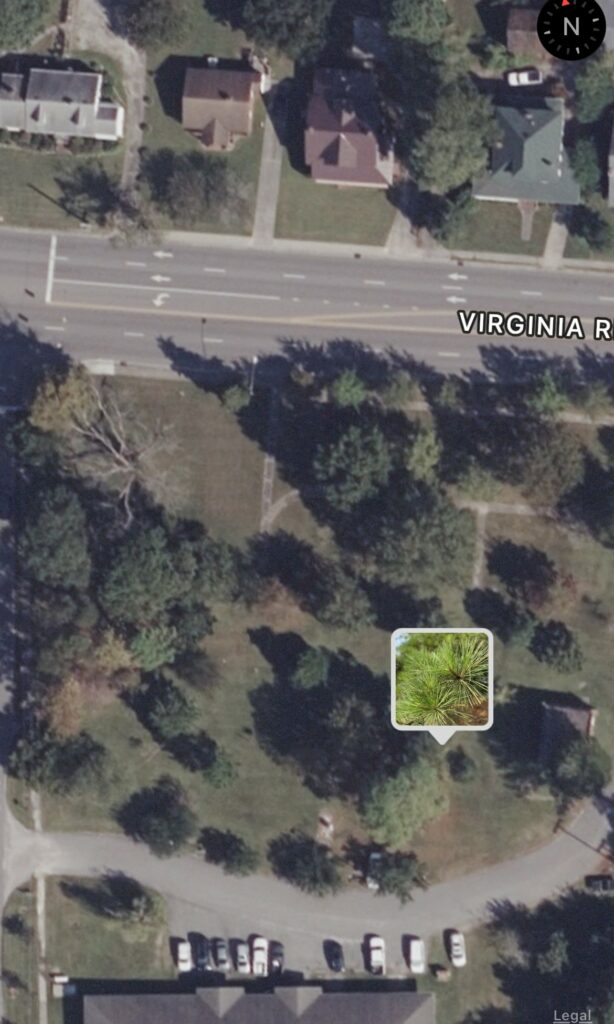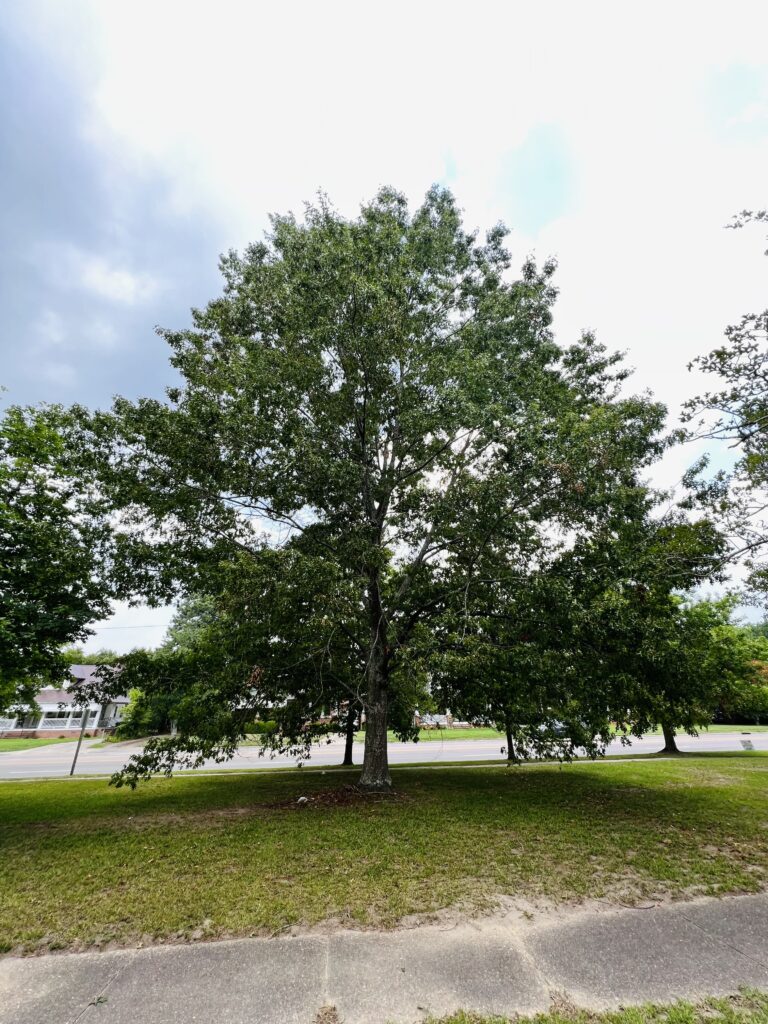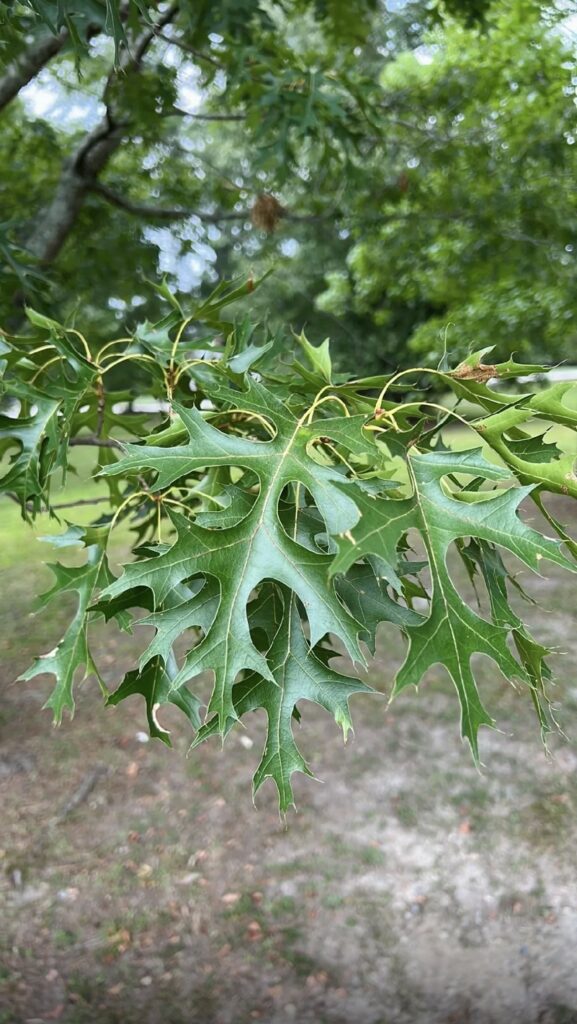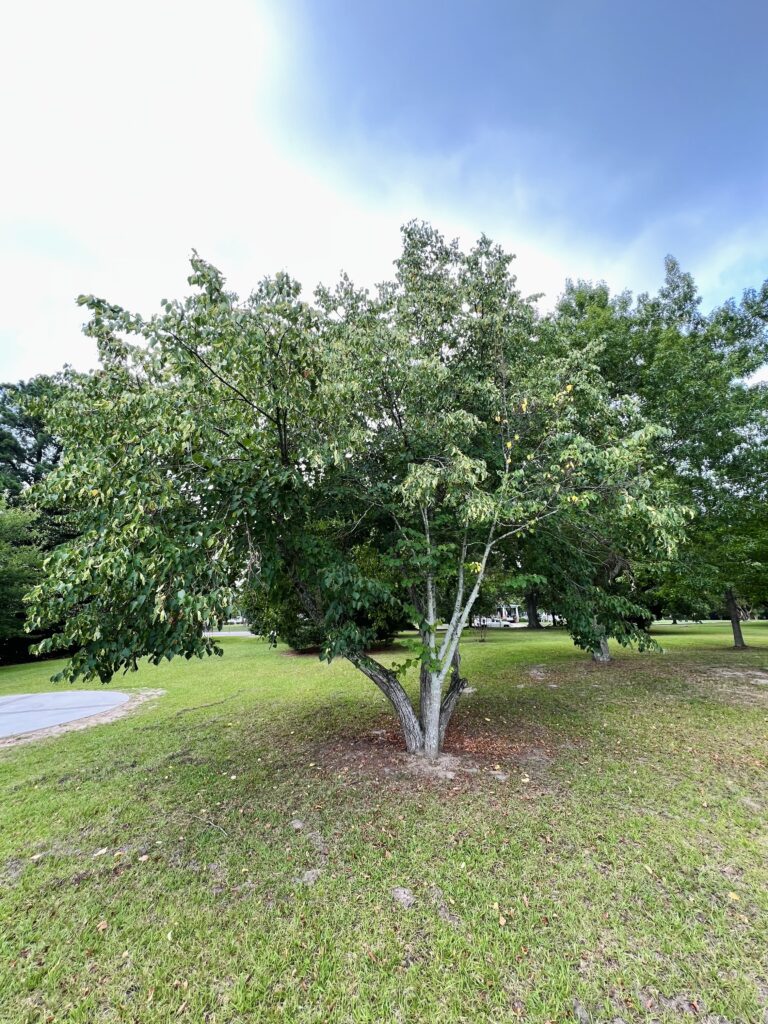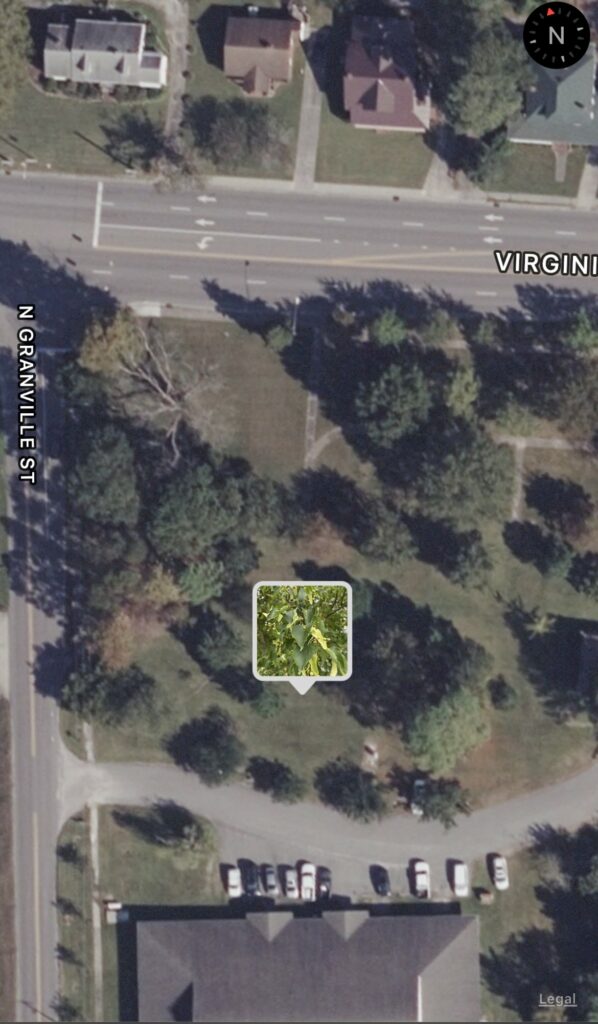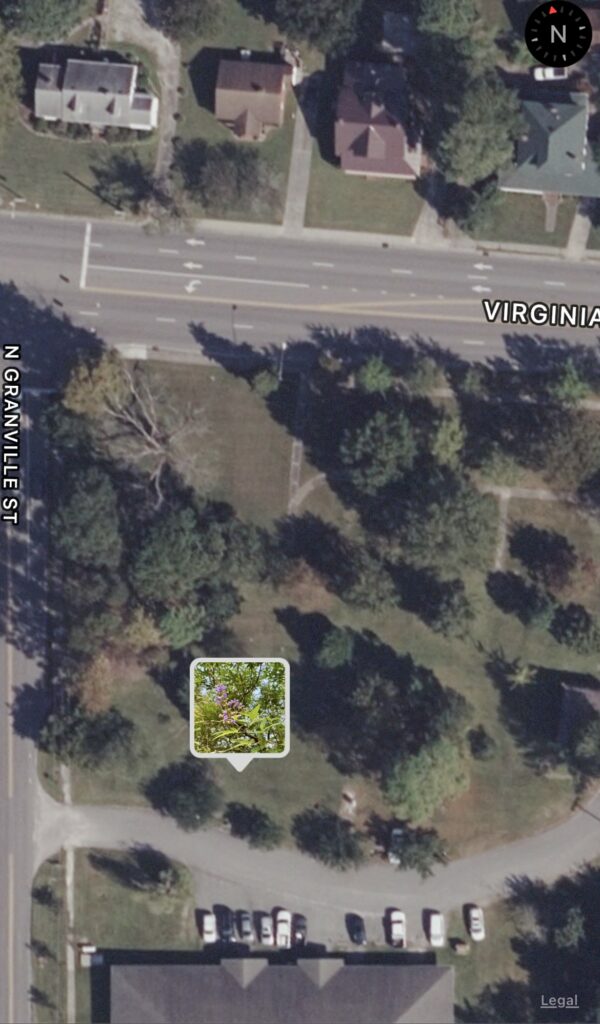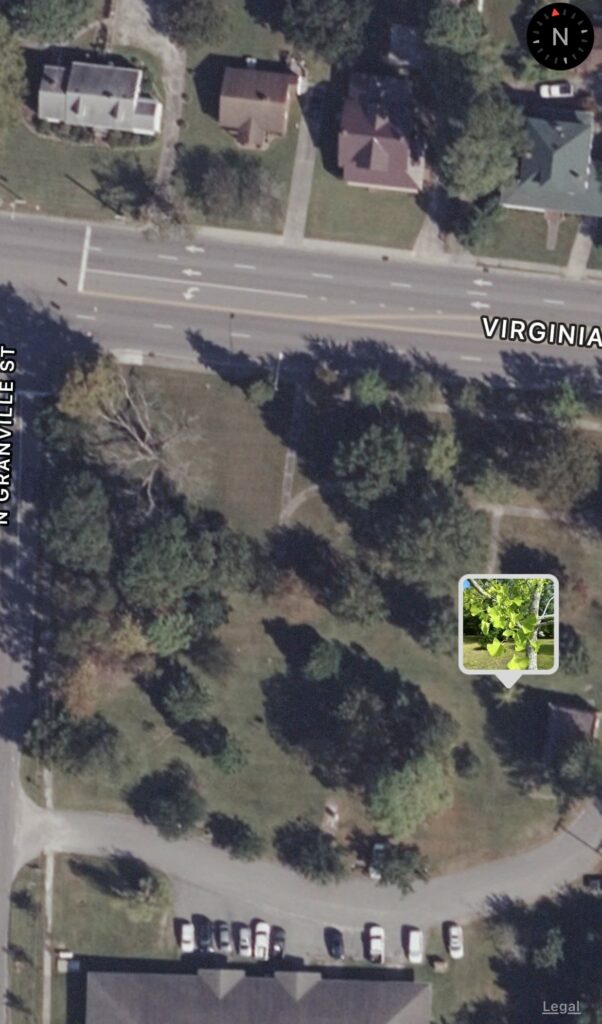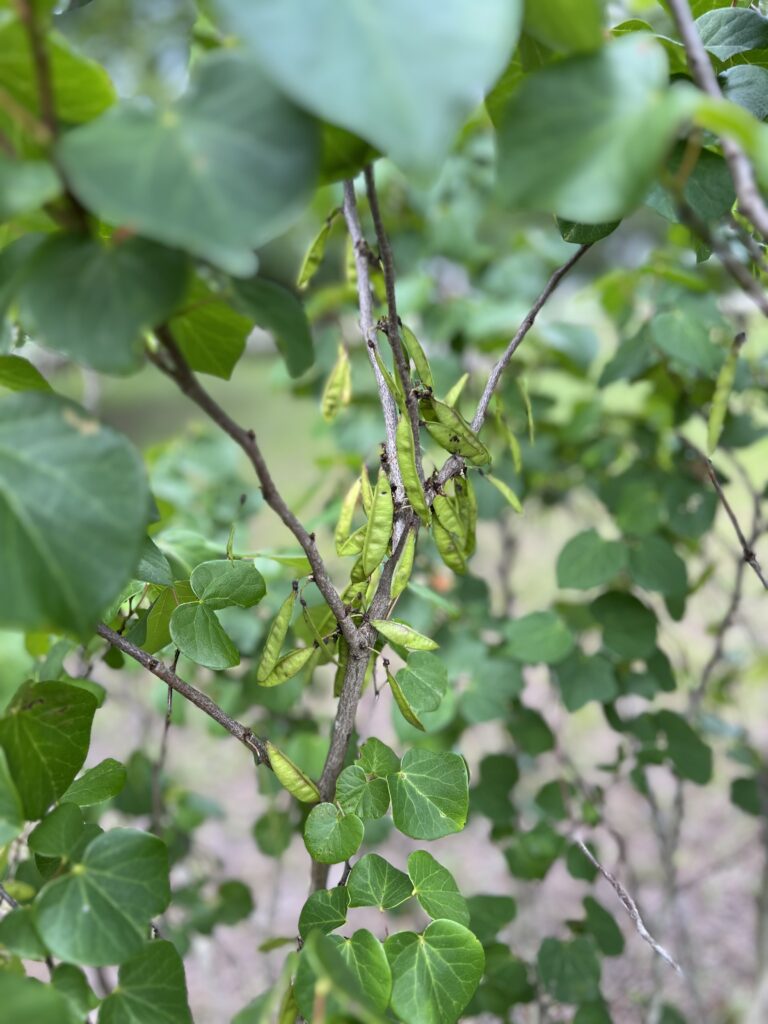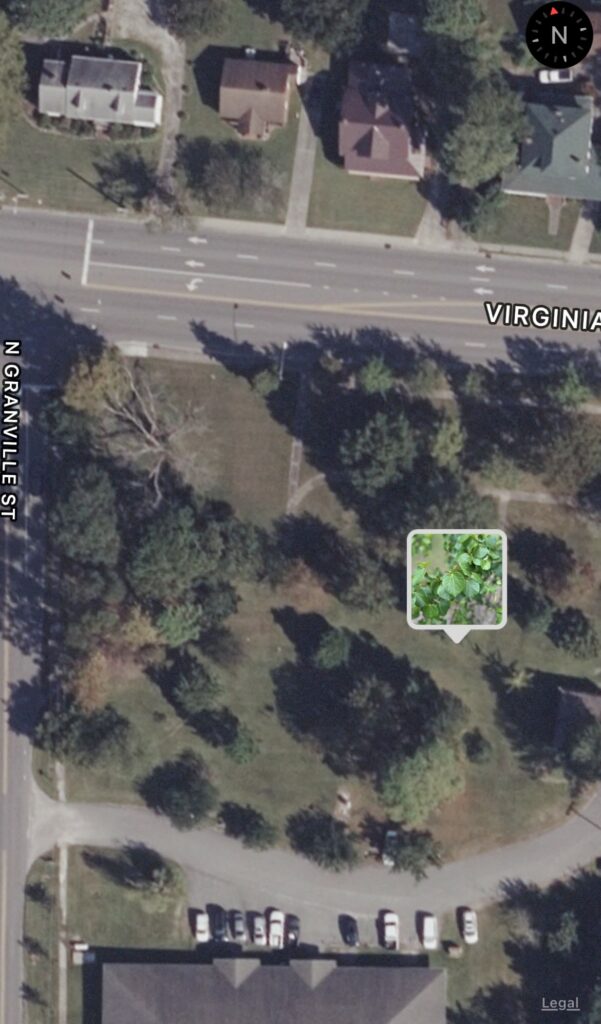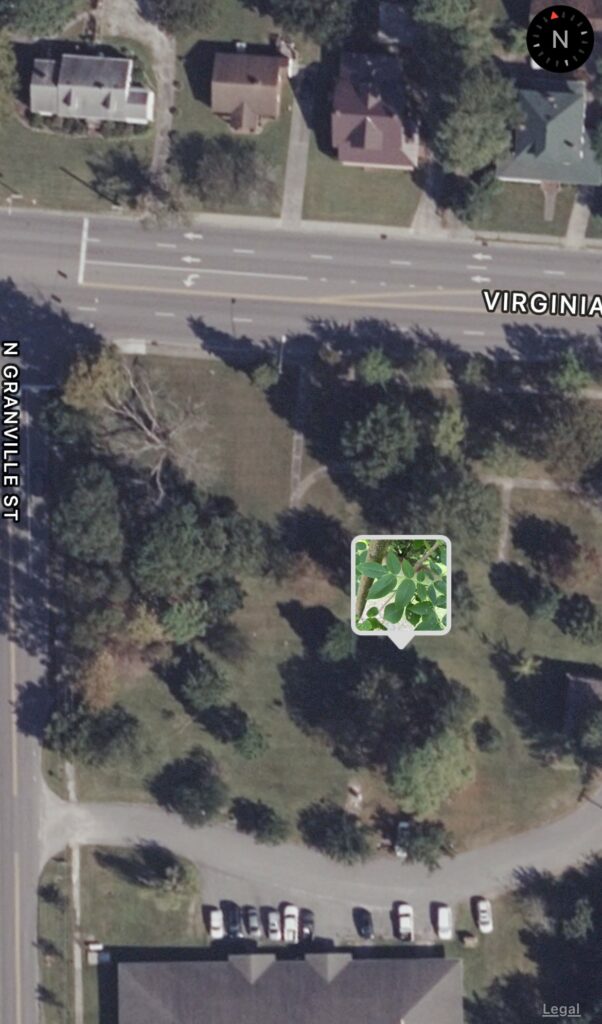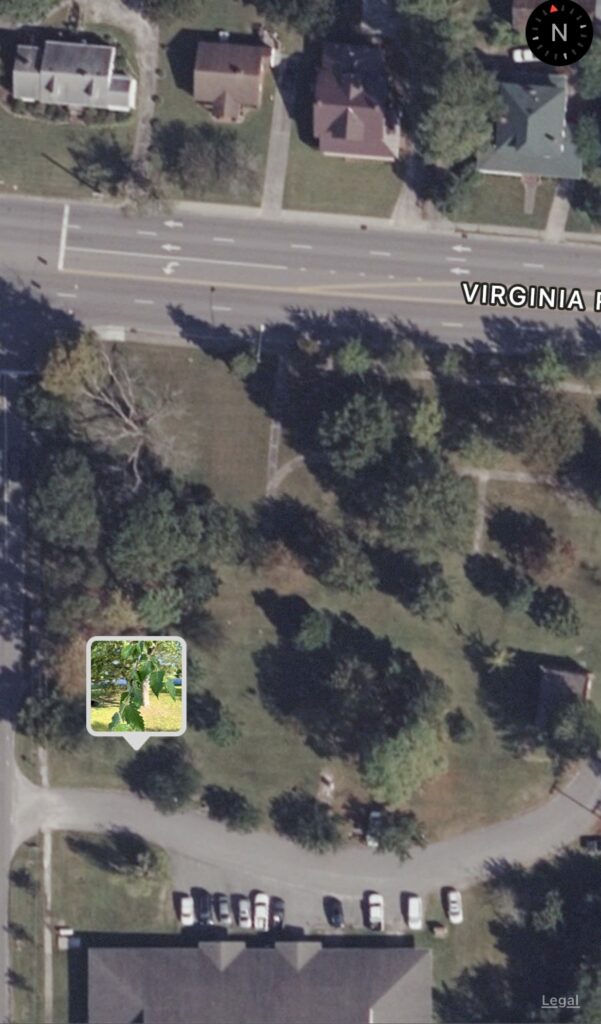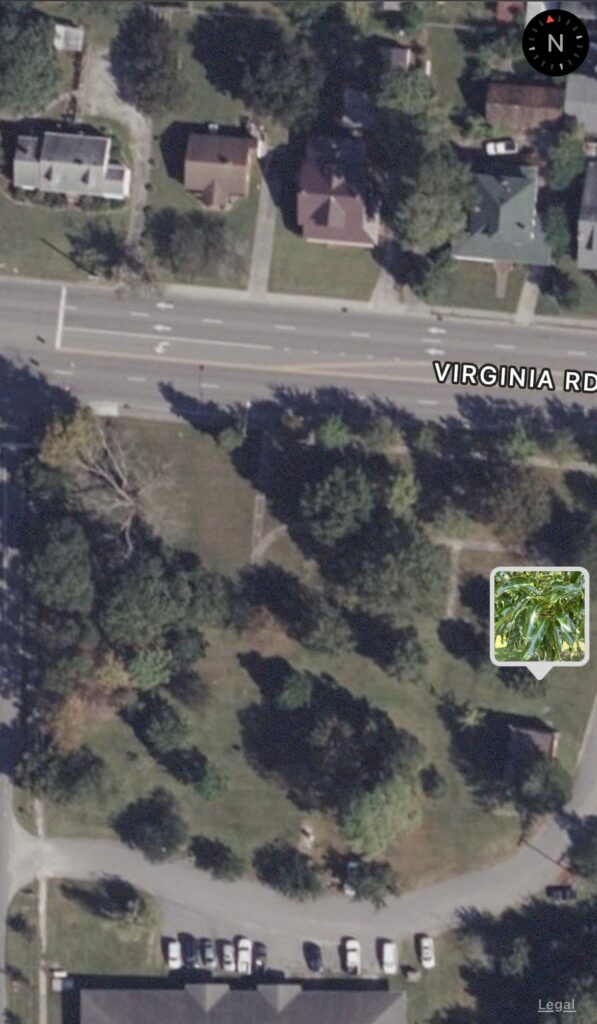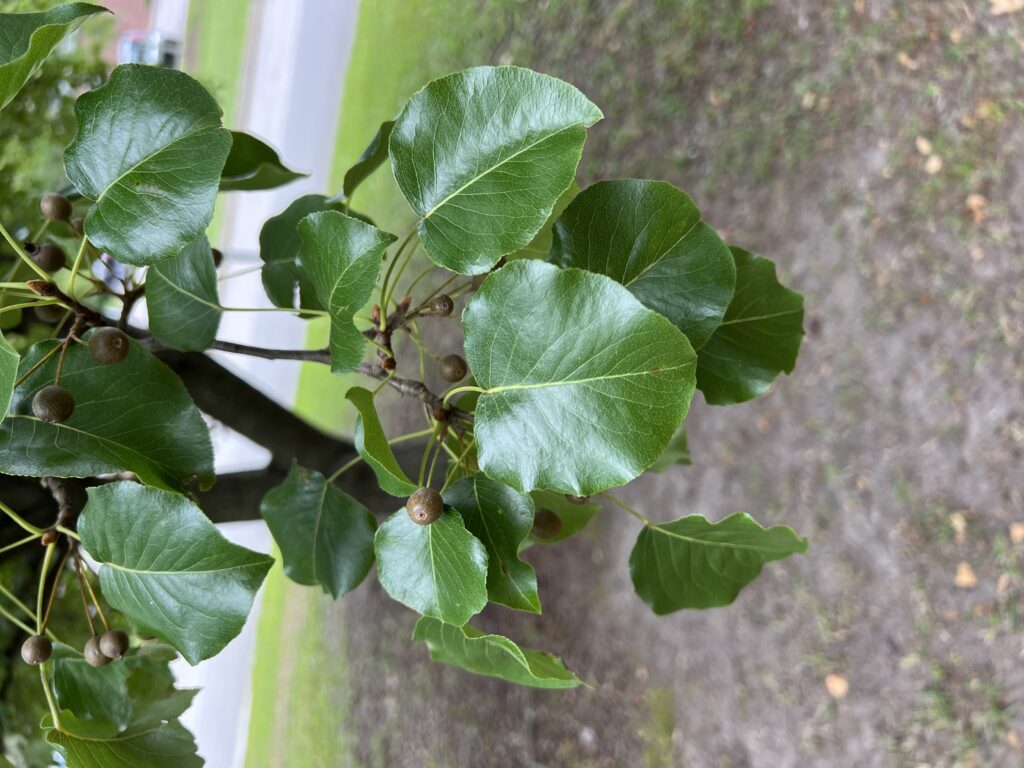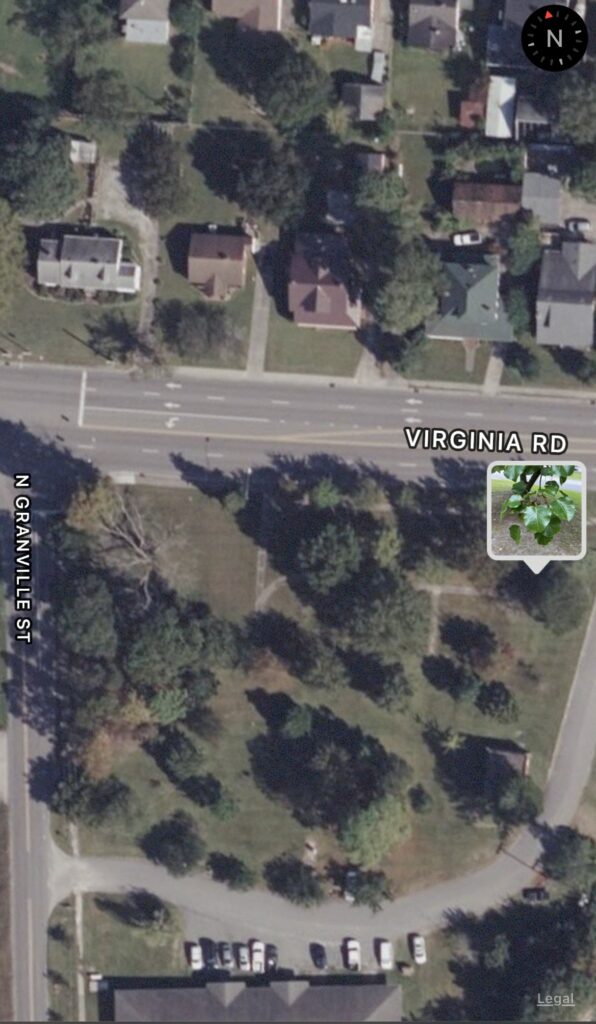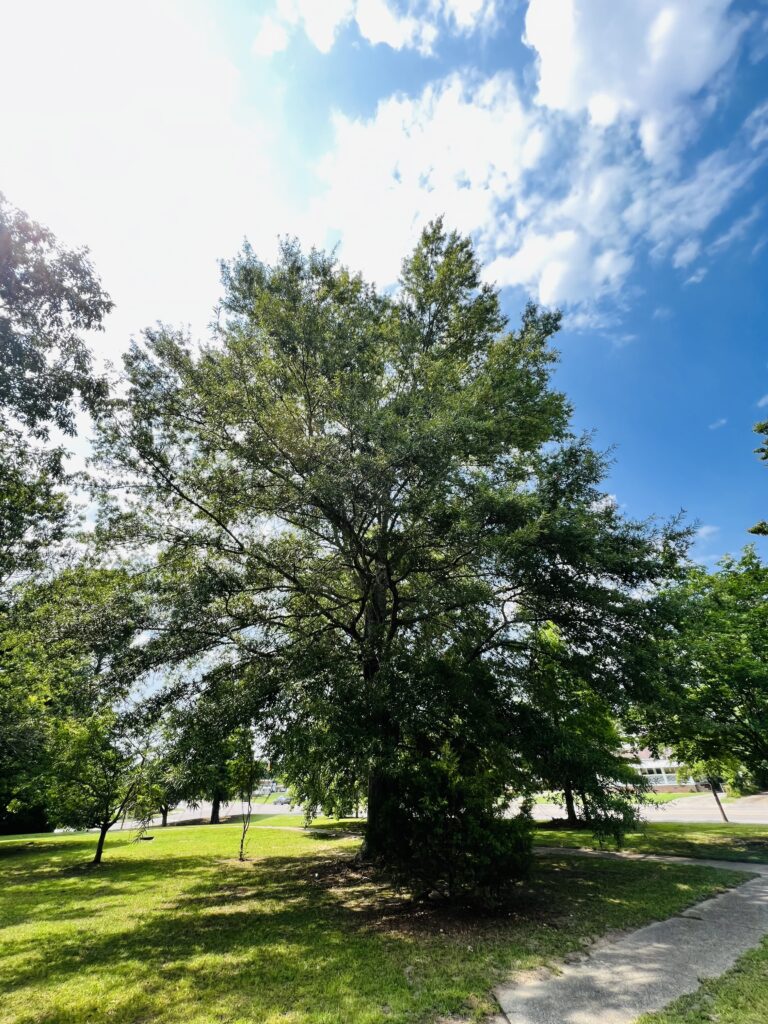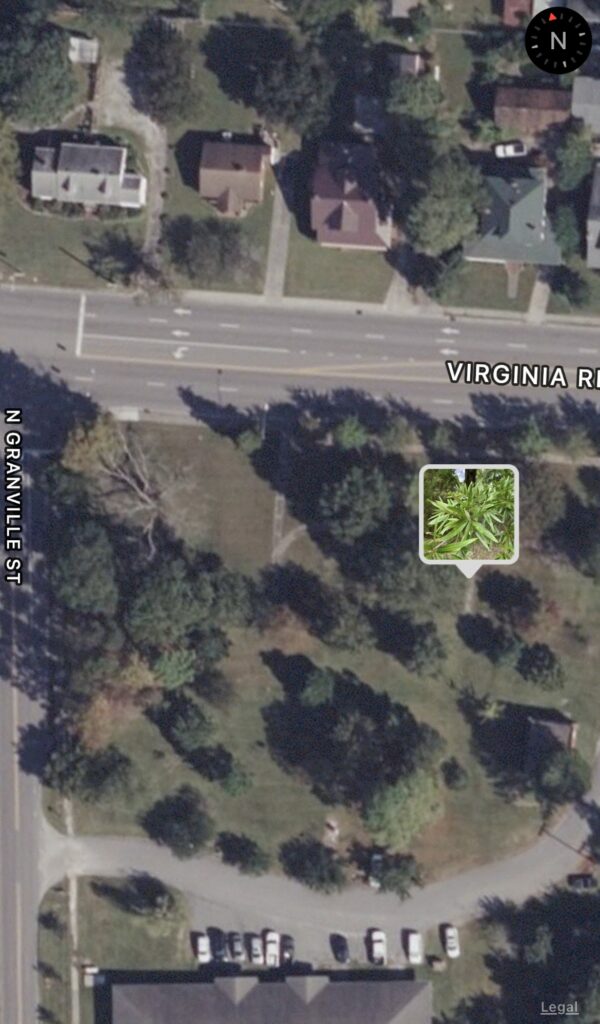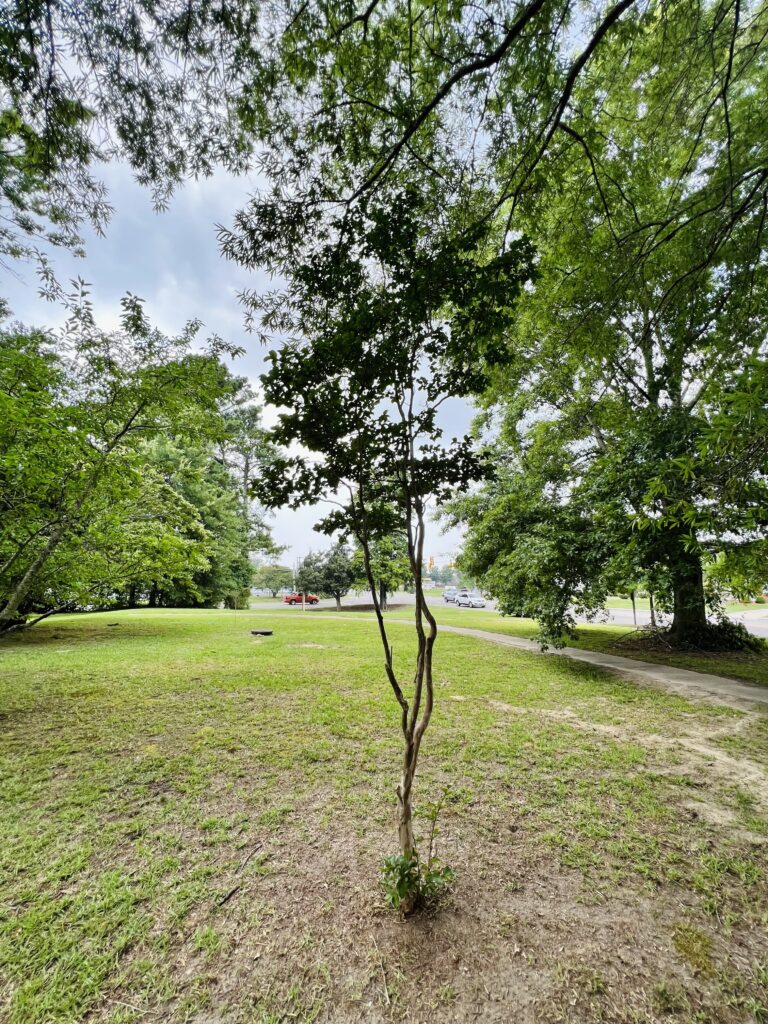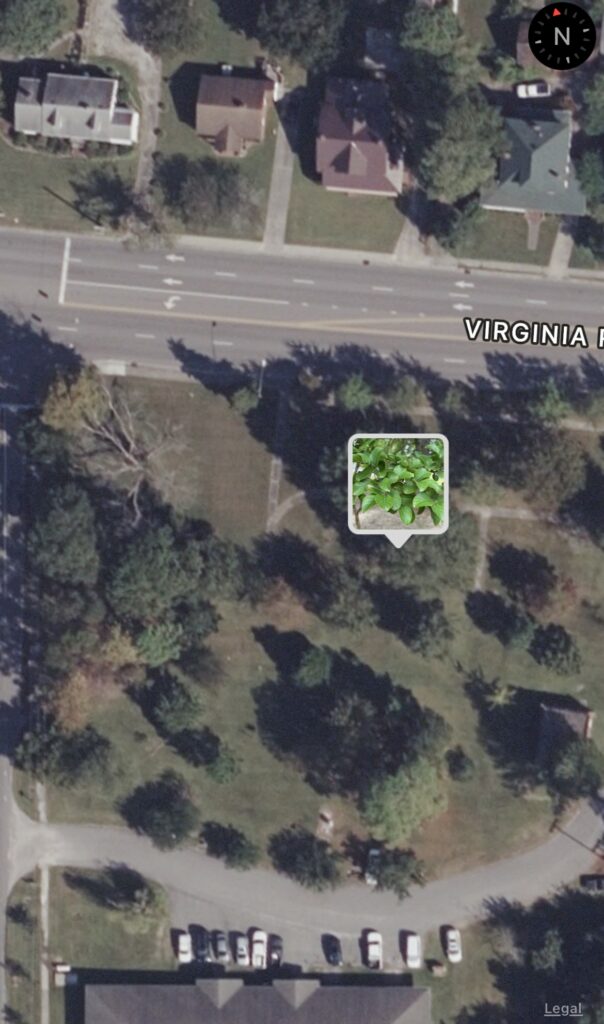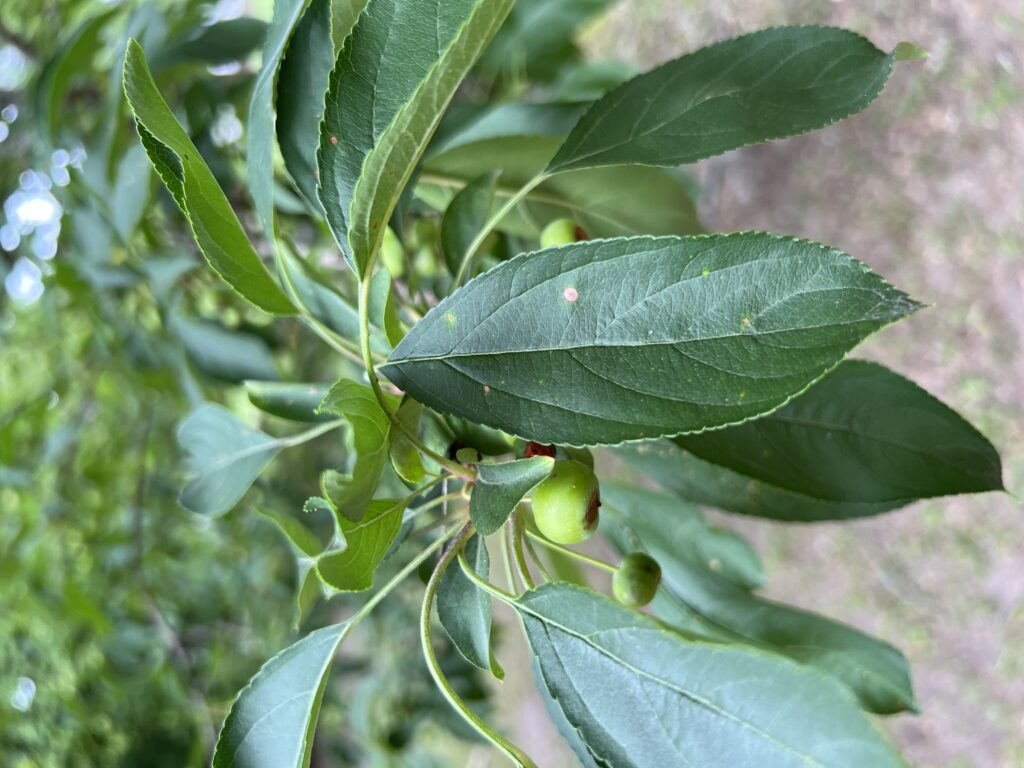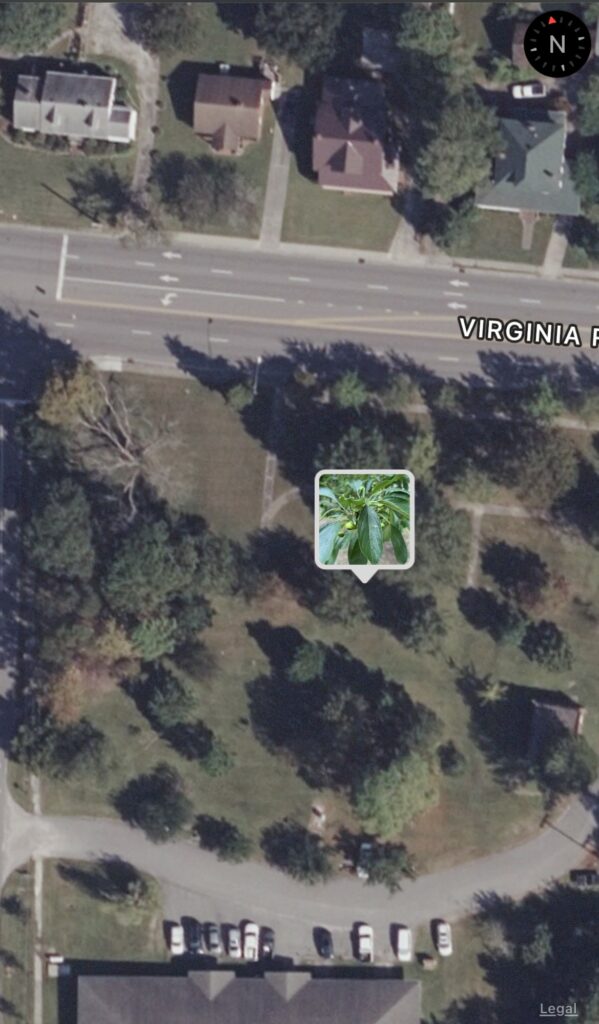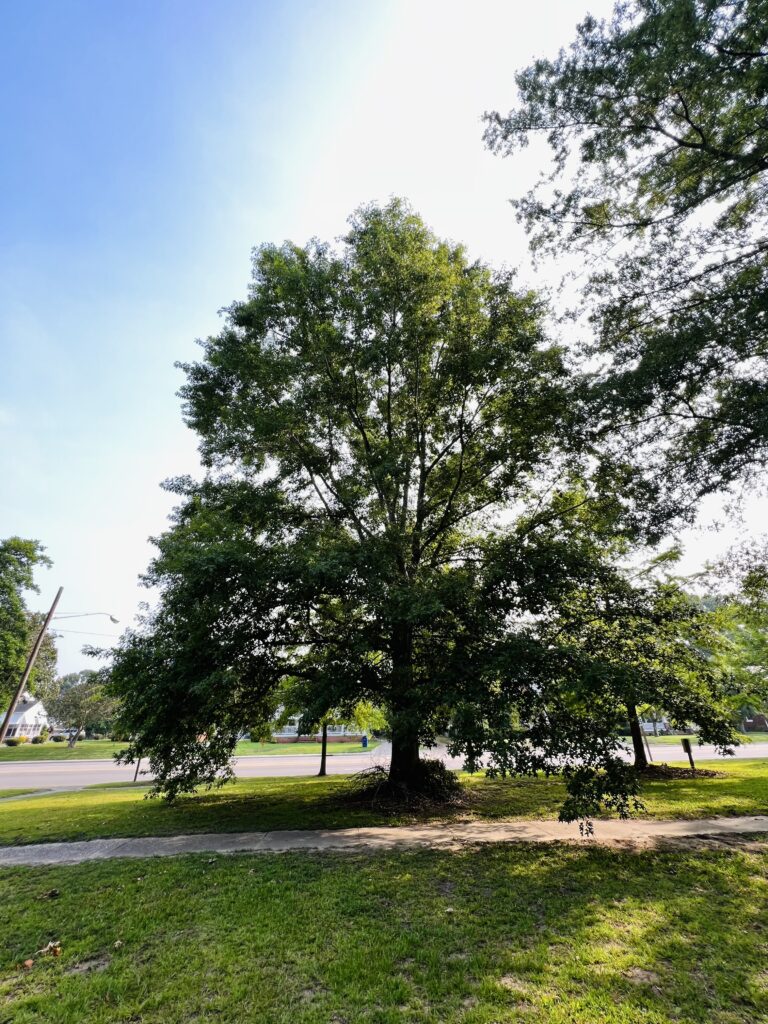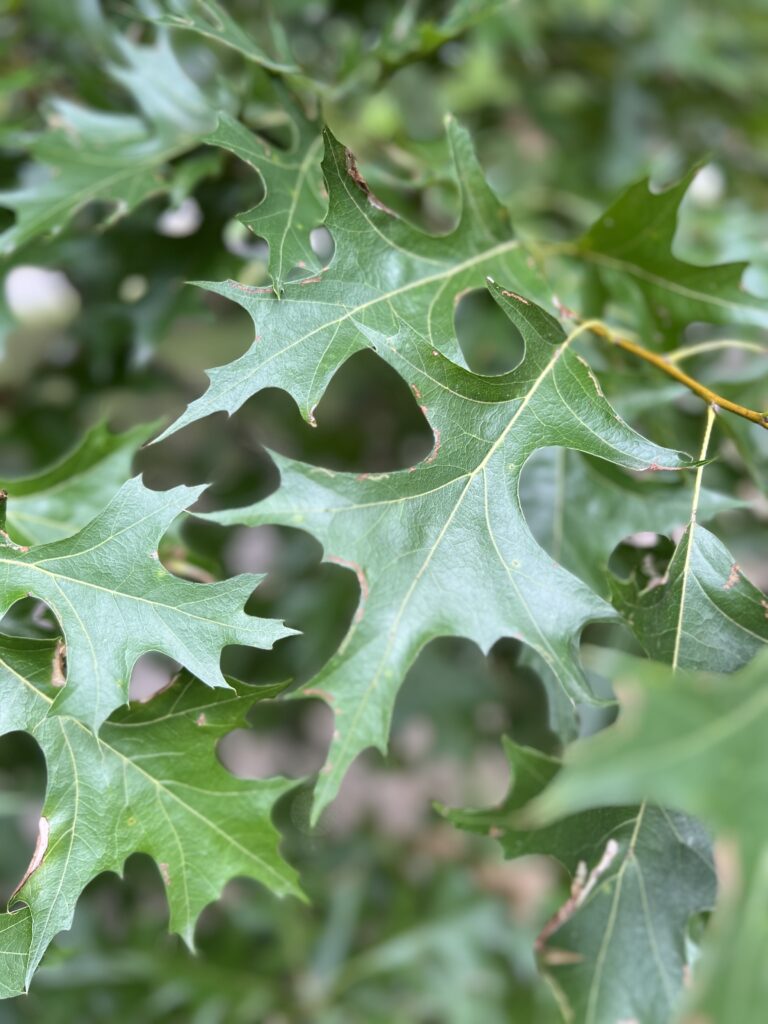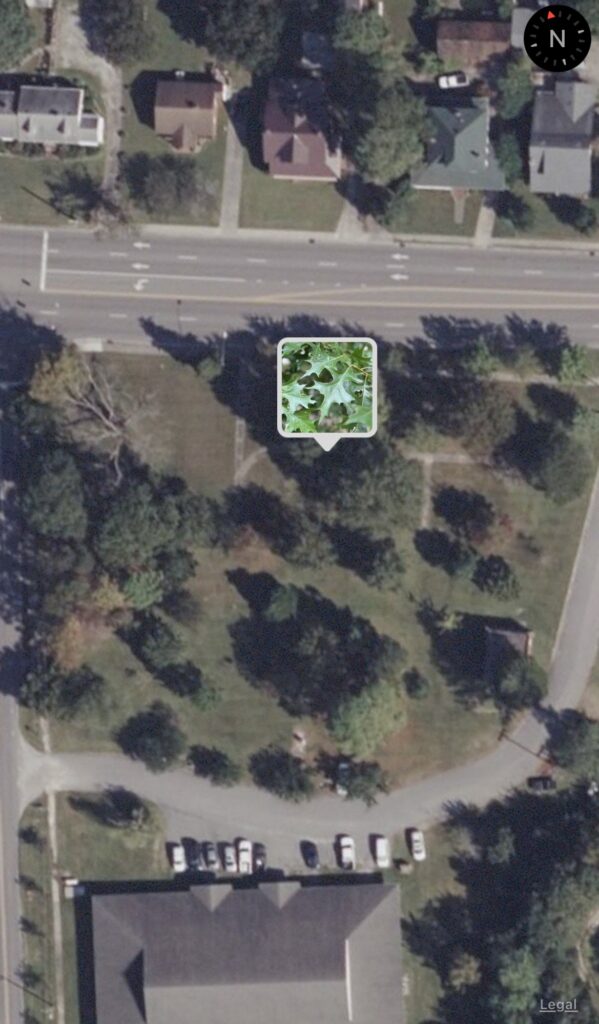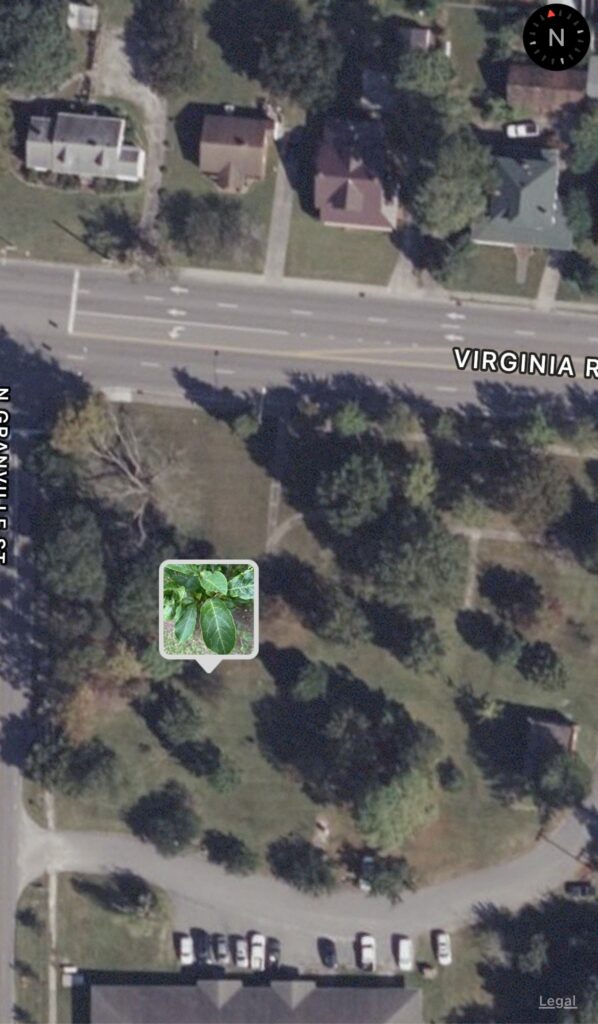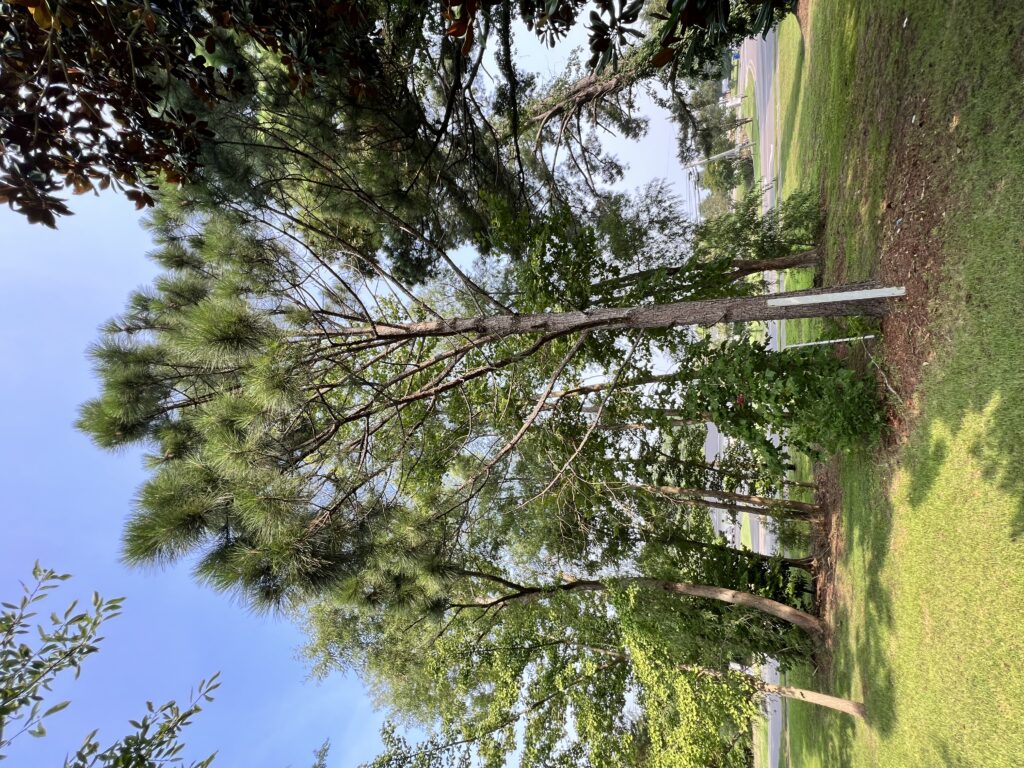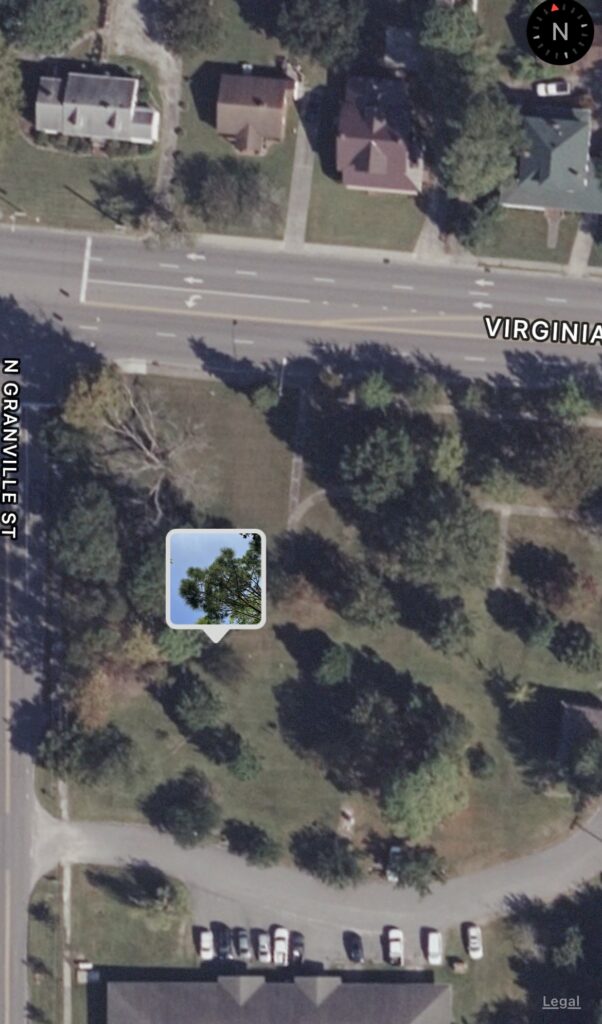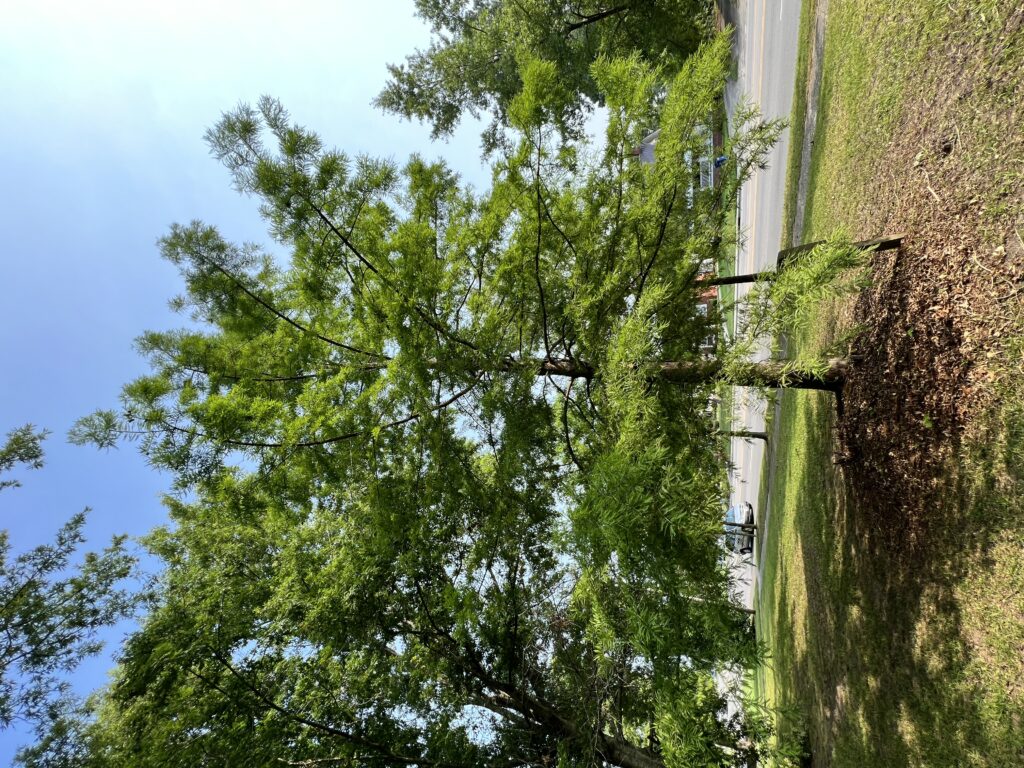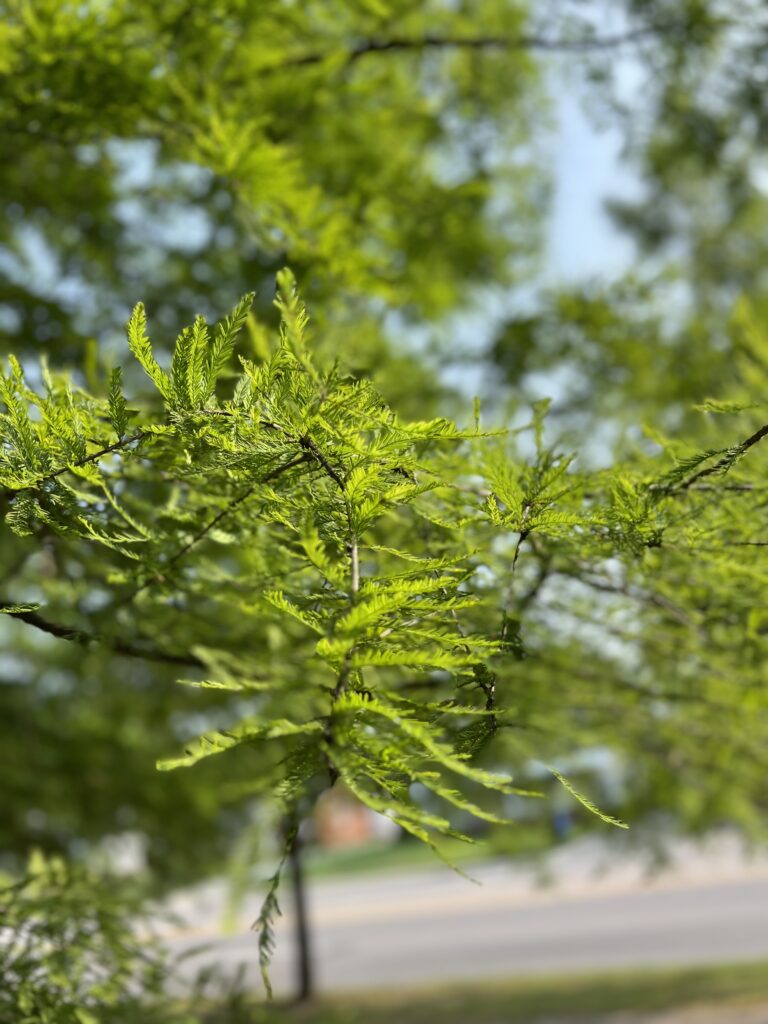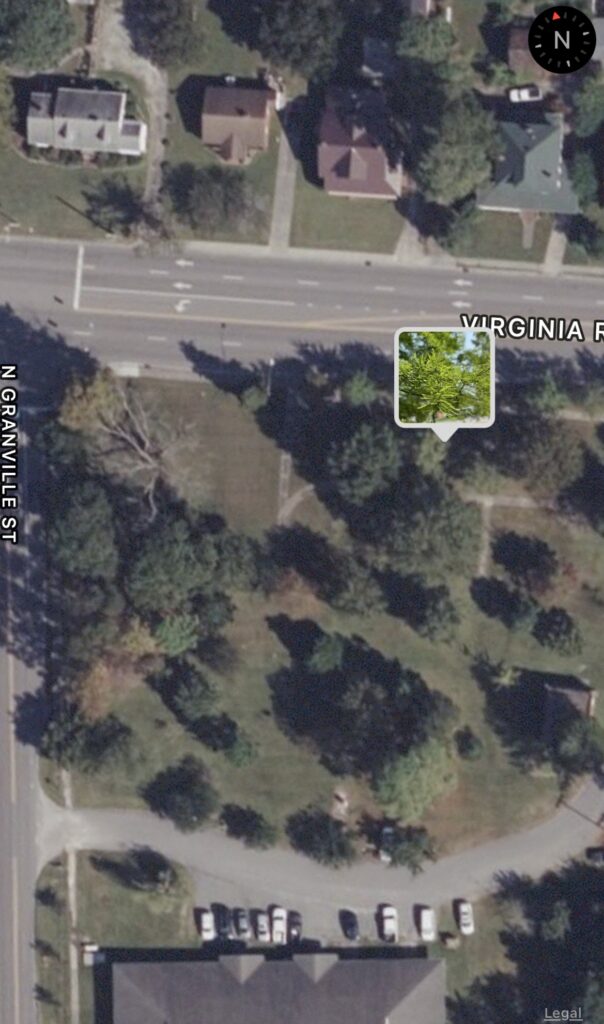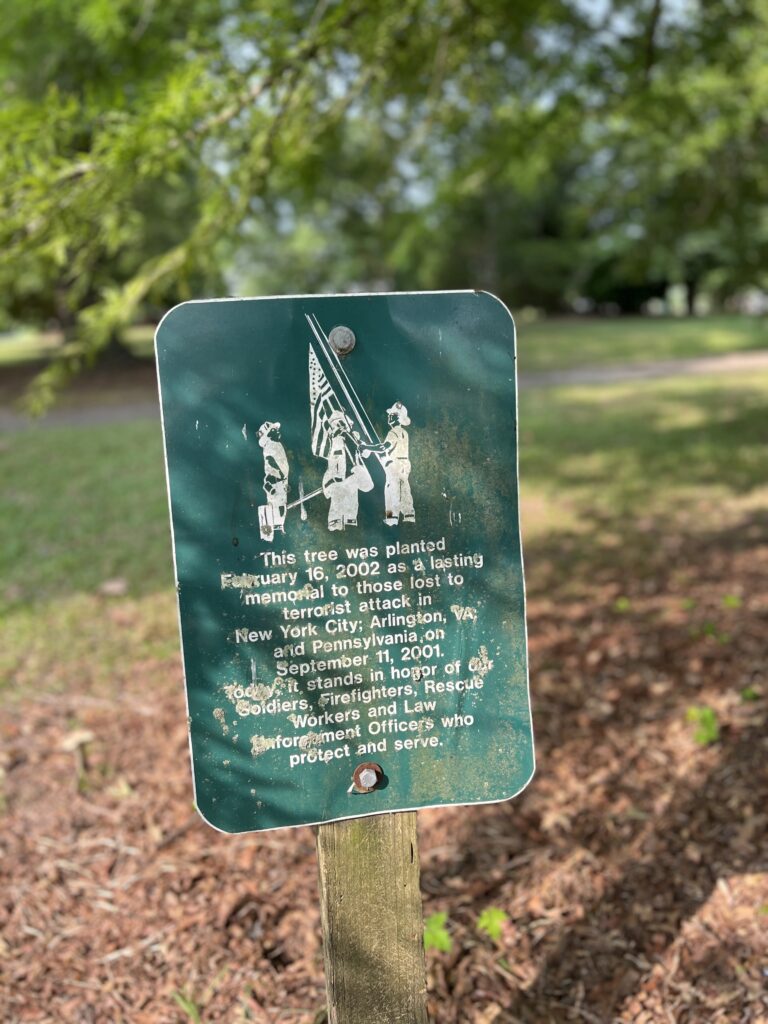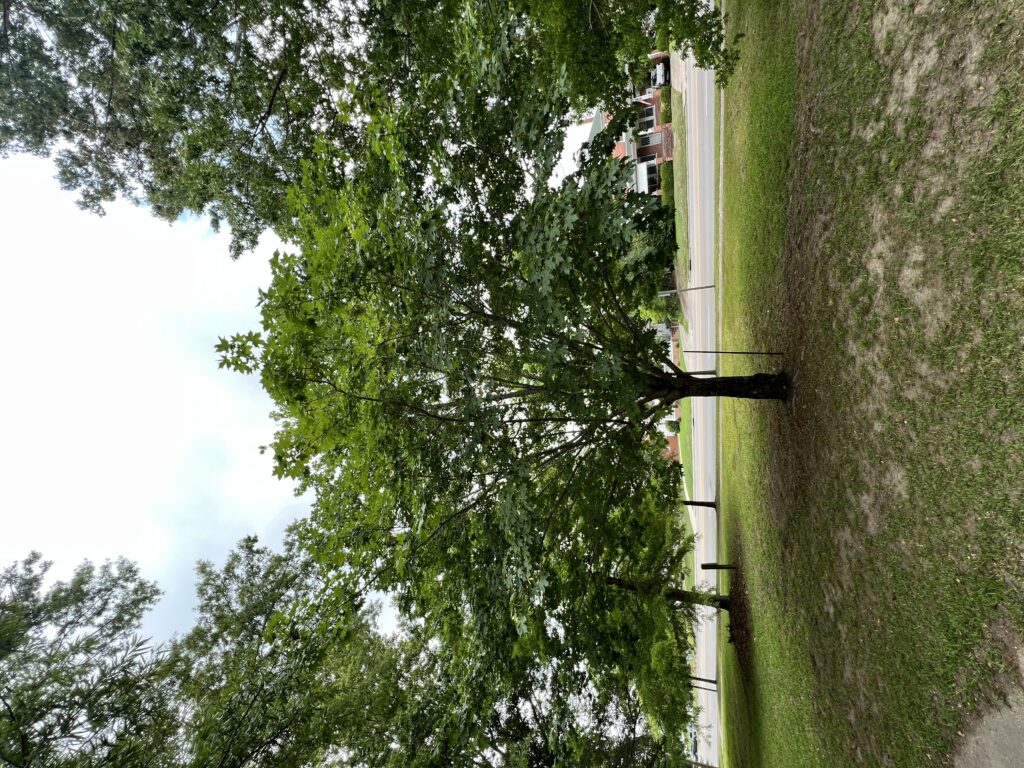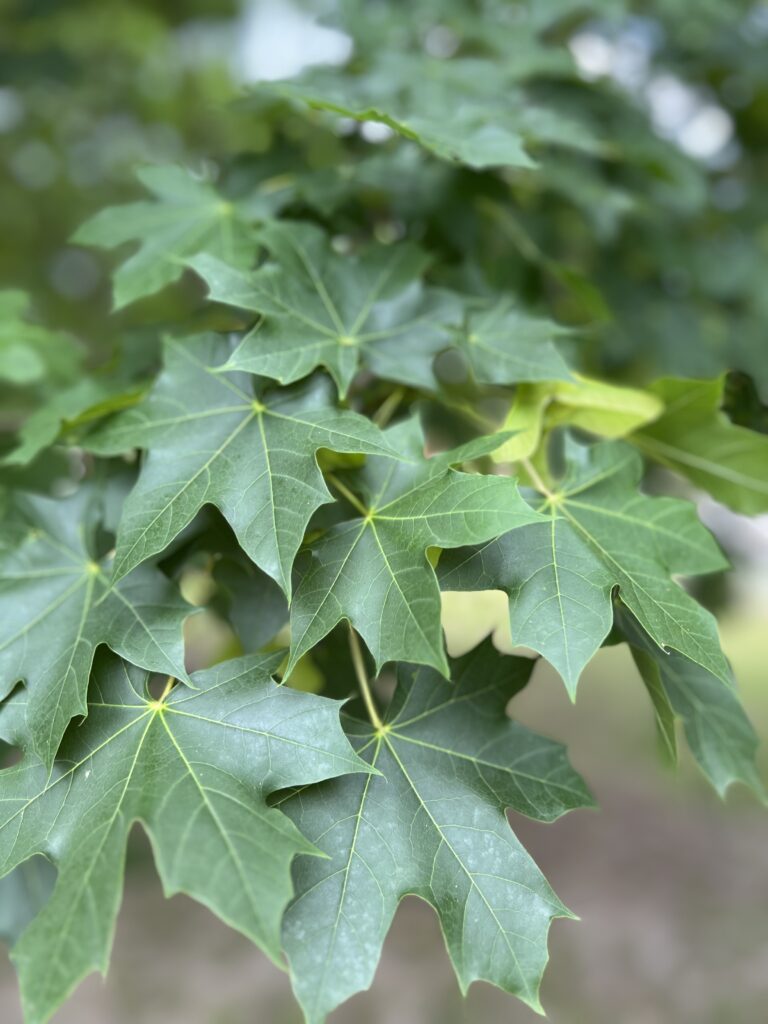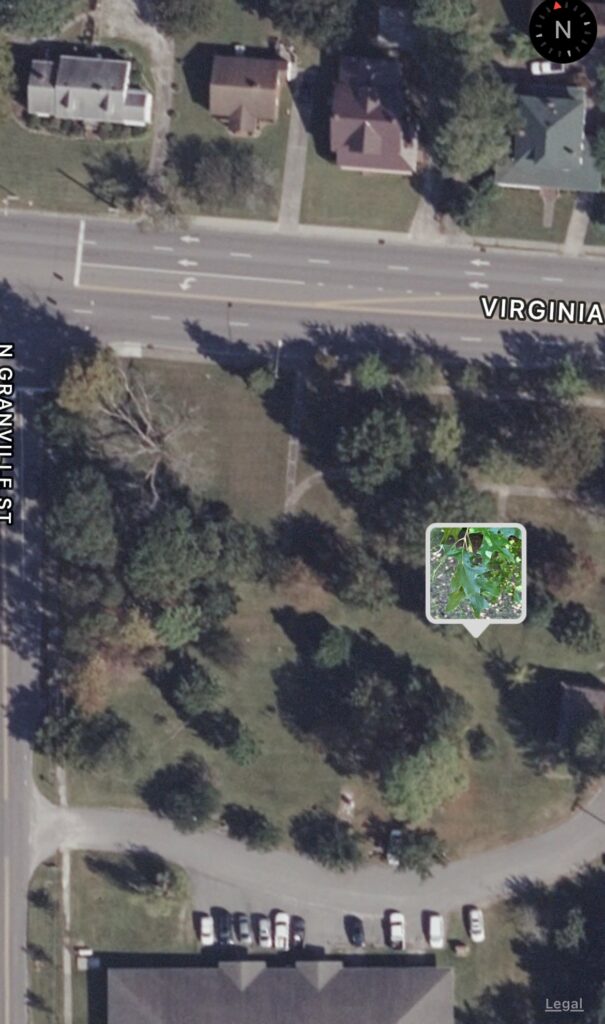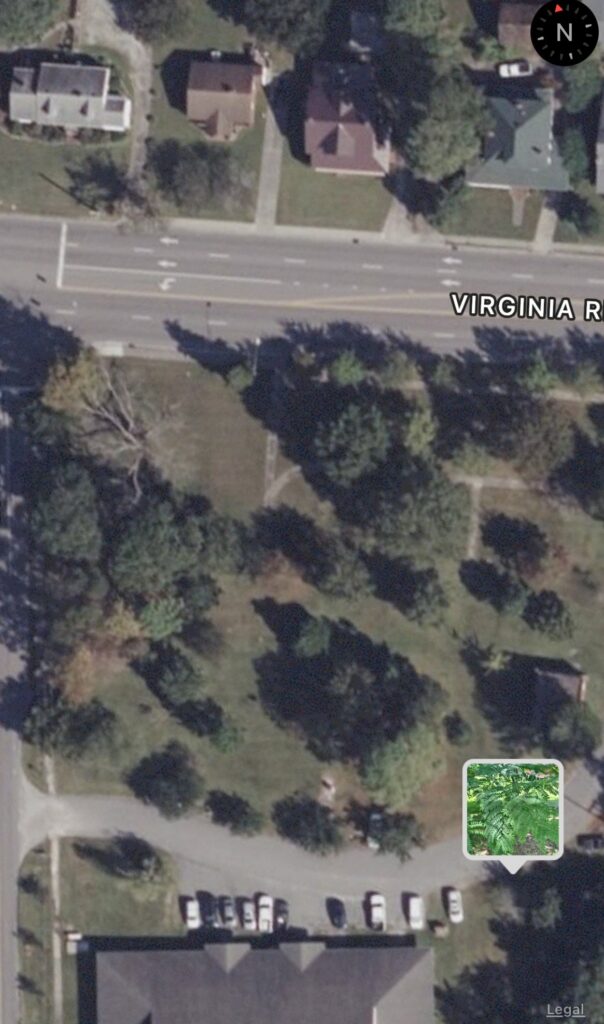Chowan County Agricultural Center Arboretum
go.ncsu.edu/readext?939816
en Español / em Português
El inglés es el idioma de control de esta página. En la medida en que haya algún conflicto entre la traducción al inglés y la traducción, el inglés prevalece.
Al hacer clic en el enlace de traducción se activa un servicio de traducción gratuito para convertir la página al español. Al igual que con cualquier traducción por Internet, la conversión no es sensible al contexto y puede que no traduzca el texto en su significado original. NC State Extension no garantiza la exactitud del texto traducido. Por favor, tenga en cuenta que algunas aplicaciones y/o servicios pueden no funcionar como se espera cuando se traducen.
Português
Inglês é o idioma de controle desta página. Na medida que haja algum conflito entre o texto original em Inglês e a tradução, o Inglês prevalece.
Ao clicar no link de tradução, um serviço gratuito de tradução será ativado para converter a página para o Português. Como em qualquer tradução pela internet, a conversão não é sensivel ao contexto e pode não ocorrer a tradução para o significado orginal. O serviço de Extensão da Carolina do Norte (NC State Extension) não garante a exatidão do texto traduzido. Por favor, observe que algumas funções ou serviços podem não funcionar como esperado após a tradução.
English
English is the controlling language of this page. To the extent there is any conflict between the English text and the translation, English controls.
Clicking on the translation link activates a free translation service to convert the page to Spanish. As with any Internet translation, the conversion is not context-sensitive and may not translate the text to its original meaning. NC State Extension does not guarantee the accuracy of the translated text. Please note that some applications and/or services may not function as expected when translated.
Collapse ▲History
The Chowan County Agricultural Center Arboretum was established in 2002 as an Eagle Scout project, by Commissioner Larry McGlaughlin’s son. In fact, this arboretum was installed during the construction of the building, by Horticulture Agent Tom Dyson. In the course of creating this project, there were 50 different tree species planted. Each tree was to remain a piece of the educational landscape display that was designed to exhibit the growth habitats of durable and ornamental tree selections for the area.
The grounds of this building also act as a landmark where the old Edenton Hospital used to be located. While walking through the arboretum, you will notice a few out-of-place sidewalk paths that were once used by the hospital itself.
Today
Over time, due to various harmful environmental conditions and events, the number of trees in the arboretum has slowly dwindled. Despite this, the majority of the of the beautiful trees still remain and continue to illustrate their unique contributions to the landscape.
Arboretum Tree Guide
This guide offers a way to help viewers learn more about the arboretum and the trees in which it inhabits. To learn more information about each individual tree, click the link located below each image. Note that even though there is a map location for each tree, there are multiples of most of the species planted throughout the landscape. Each tree species in the arboretum is now tagged with a plaque, stating the common name and scientific name of the species. The plaques also contain a QR code that links to more information about that species from the NC State Extension Gardener Plant Toolbox.
1. Loblolly Pine
Other Common Name(s): Bull Pine, North Carolina Pine, Oldfield Pine, Rosemary Pine
Scientific Name: Pinus taeda
The Loblolly Pine is a native, evergreen tree that can grow anywhere from 60 to 90 feet in height. It needs wet and moist, acidic soils with poor drainage, accompanied by full sun. It does well in areas that have very hot and humid summer climates and winters that are not frigid. This pine holds great value in forest management as a timber tree. It is important to understand that over time, the Loblolly Pine will lose its lower branches as it ages.
2. Scarlet Oak
Other Common Name(s): Black Oak
Scientific Name: Quercus coccinea
The Scarlet Oak is a large deciduous tree that grows 50 to 80 feet in height and 45 to 60 feet wide. It is considered the Scarlet Oak because of its best known feature, which is its vibrant scarlet red foliage that appears during the fall. The Scarlet Oak likes full sun and partial shade during the day and prefers acidic soils. However, it can tolerate sandy soils when dry.
3. Littleleaf Linden‘Greenspire’
Other Common Name(s): Small-Leaf Lime Tree, Little Leaf Linden, Small-Leafed Lime
Scientific Name: Tilia cordata
Cultivar: ‘Greenspire’
The Littleleaf Linden ‘Greenspire’ is a broadleaf deciduous tree that is known to be the best out of all the Lindens. In height, it can grow 50 to 60 feet tall, while it can get 50 feet in width. This conifer has beautiful, glossy leaves, fragrant flowers, and creamy yellow clusters of fruit during the summer months. The flowers attract hummingbirds, bees, and butterflies because of its rich nectar, and the tree also acts as a great nesting site for various bird species that dwell in cavities. This medium-sized tree likes full sun to part shade, with soils that are moist, loamy, and well-drained. When the climate is super dry, especially when young, it needs to be watered. Be sure to not expose this tree to severe drought, pollution, salt sprays, or wet conditions, due to the fact that it is not tolerant.
Littleleaf Linden ‘Greenspire’
4. Flowering Dogwood
Scientific Name: Cornus florida
The Flowering Dogwood is a deciduous tree that is native to eastern North America, along with other areas. In height, this tree can grow anywhere from 15 to 25 feet tall. While the dogwood enjoy full sun to partial shade, it is recommended that they be located in areas with more afternoon shade along the Piedmont and Coastal regions. The Flowering Dogwood likes high organic matter soils that have pH’s that are slightly acidic to neutral. During the spring, the true flowers attract specialized bees and butterflies. In the fall, the Flowering Dogwood produces red berries that act as a food source for songbirds and other wildlife. In the state of North Carolina, the flower on a dogwood is known to be the state flower.
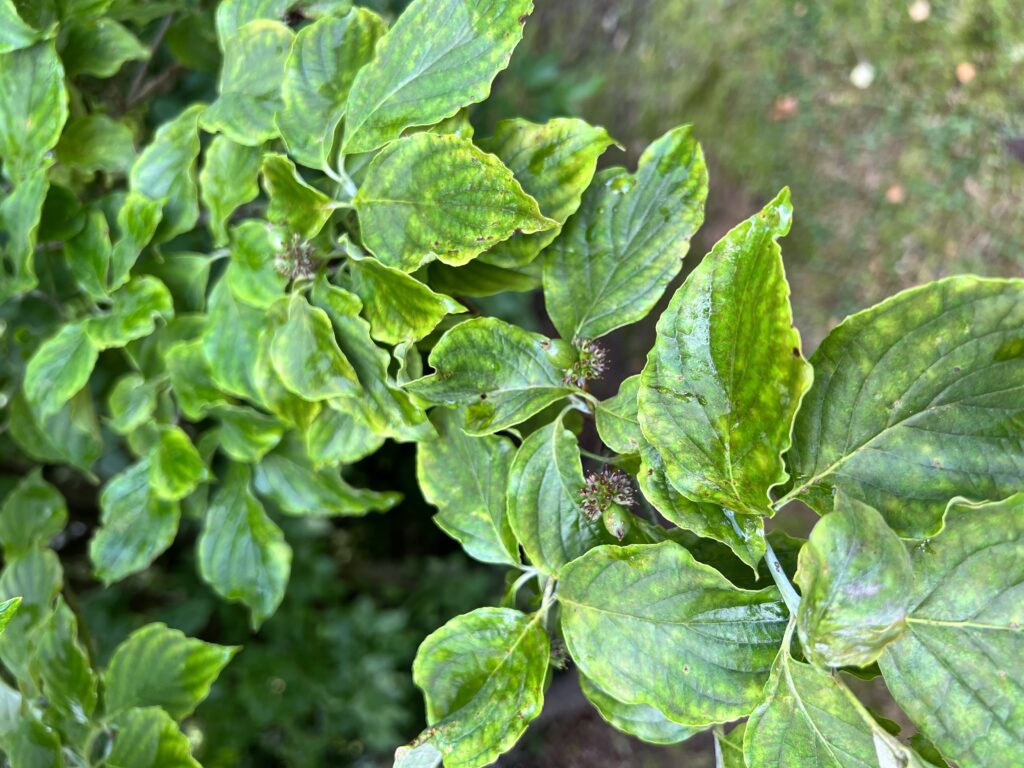
5. Chastetree
Other Common Name(s): Chasteberry, Lilac chastetree, Monk’s Pepper, Texas lilac
Scientific Name: Vitex agnus-castus
The Chastetree is a multi-stem, deciduous tree that does well in hot weather, as they are native to Europe and Asia. It likes full sun, is moderately tolerant to salty soils, and once established it is drought tolerant. Grown as a tree, a Chastetree can grow 20 feet in height and width. When grown as a shrub, it can grow to be 10 to 15 feet. The Chastetree grows purple, spike-like flowers that bloom all summer, and attract several pollinators, including bees.

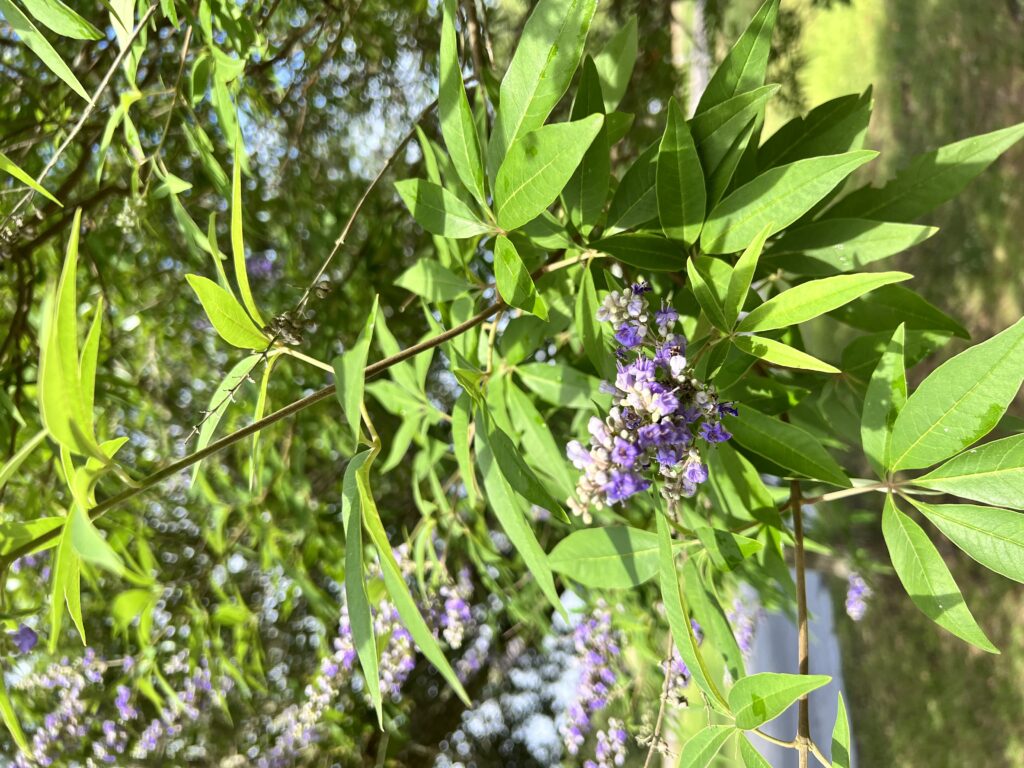
6. Gingko
Other Common Name(s): Maidenhair Tree
Scientific Name: Ginkgo biloba
The Ginkgo is a deciduous tree that can reach heights of 50 to 80 feet and widths of 30 to 40 feet. This woody tree need full sun and proper drainage, but can tolerate adverse conditions and a range of soil textures and pH’s. During the fall months, its fan-shaped foliage turns into a beautiful yellow hue. When planting a Ginkgo, always be sure to only plant male trees because the female fruits are very foul smelling and messy.
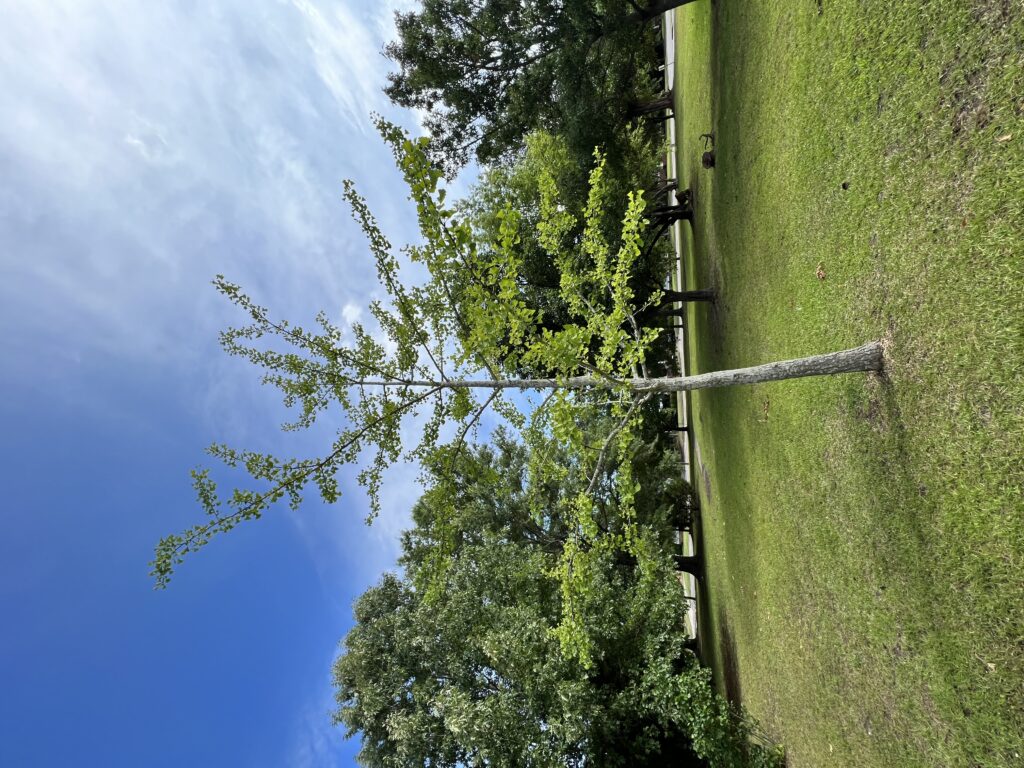

7. Eastern Redbud
Other Common Name(s): American Judos Tree, American Redbud, Redbud
Scientific Name: Cercis canadensis
The Eastern Redbud is a deciduous tree that grows 20 to 30 feet in height, while growing to widths of 20 to 30 feet. This ornamental tree is adaptable to a variety of pH levels, but does not tolerate heat, severe drought, or disturbance around the root area. The Eastern Redbud does tolerate soils that contain fertile clay or sand in moderation, as well as full sun to partial shade. During the spring, before foliage appears, rose pink to light purple flowers bloom in clusters. These beautiful flowers attract butterflies, bees, and other pollinators.
8. Green Ash
Other Common Name(s): American Ash, Canadian Ash, Red Ash, Water Ash
Scientific Name: Fraxinus pennsylvanica
The Green Ash is a native deciduous tree that can get 50 to 70 feet in height and reach widths of 35 to 50 feet. This broadleaf tree likes full sun to areas with light shade, and clay or loam soils that are moist and well-drained. It tolerates drought conditions, soils that are alkaline, salt in moderation, wind, and occasional flooding. It is also known to be deer resistant.
In our arboretum, the full original tree that was planted was removed. There are sprouts of the Green Ash tree surrounding the trunk of the original, and you can observe how large this tree used to be years ago. There are several other tree species in the arboretum that have been pruned back over the years, displaying a different form than years prior.
9. Leyland Cypress
Scientific Name: x Hesperotropsis leylandii
The Leyland Cypress is a hybrid evergreen tree that has needled foliage. This tree has beautiful blue-green sprays and scale-like bark that is reddish-brown in color. It can grow 60 to 70 feet in height, and 10 to 15 feet in width. Additionally, the Leyland Cypress has been known to grow 50 feet tall in just a short 15 years, due to its fast-growth rate. It does well in well-drained soil and is known to be salt tolerant. While this species is very sturdy in structure, proper pruning is necessary to address pest and disease concerns.
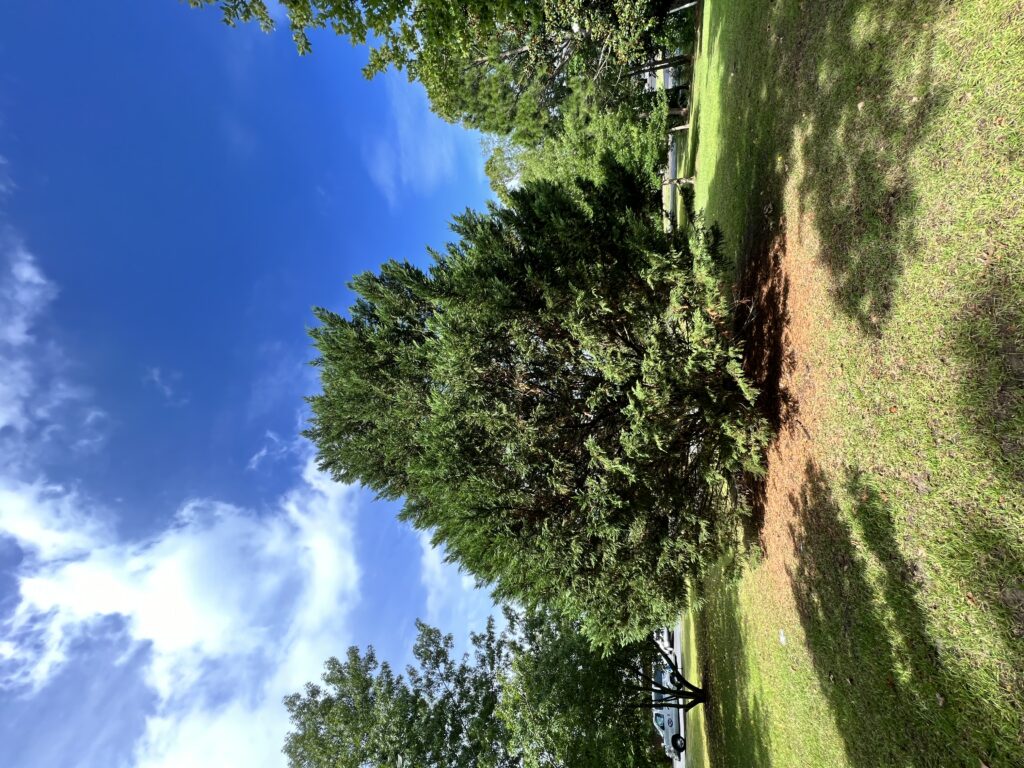
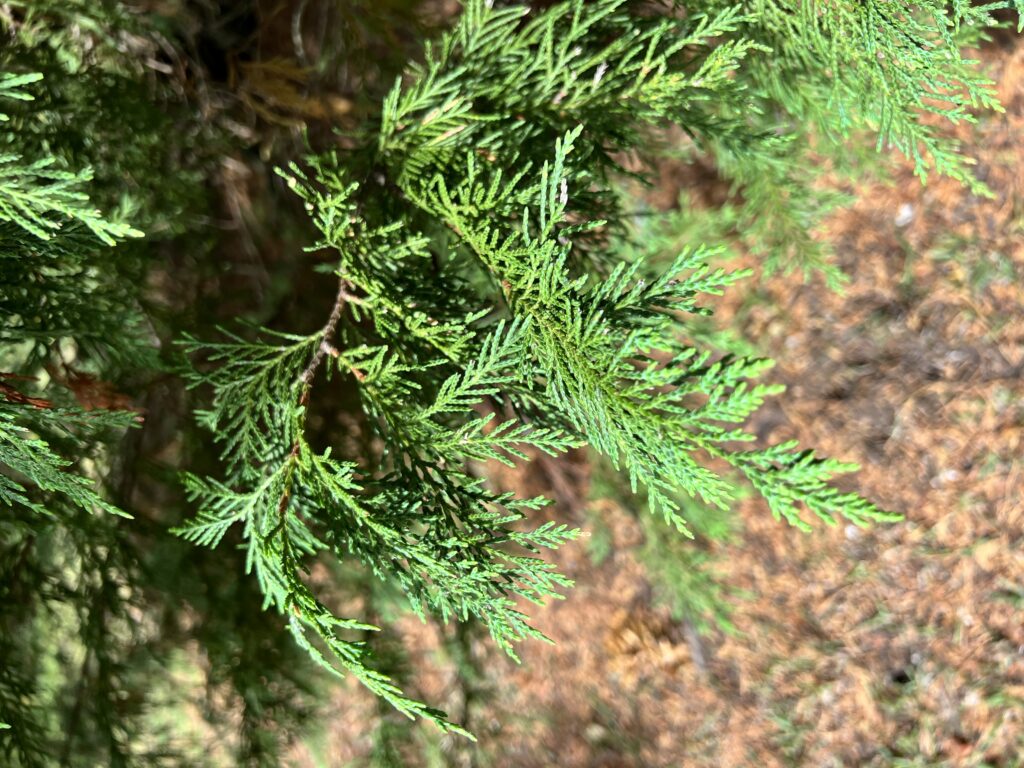
10. Lacebark Elm
Other Common Name(s): Chinese Elm, Drake Elm
Scientific Name: Ulmus parvifolia
The Lacebark Elm is a deciduous shade tree that grows 40 to 60 feet in both height and width. This large ornamental tree has exfoliating bark during the winter months, leaving the trunk cinnamon, gray, brown, or tan in color. While the Lacebark Elm likes full sun to partial shade and soil that is well-drained, it is tolerate of a variety of soil and pH types.
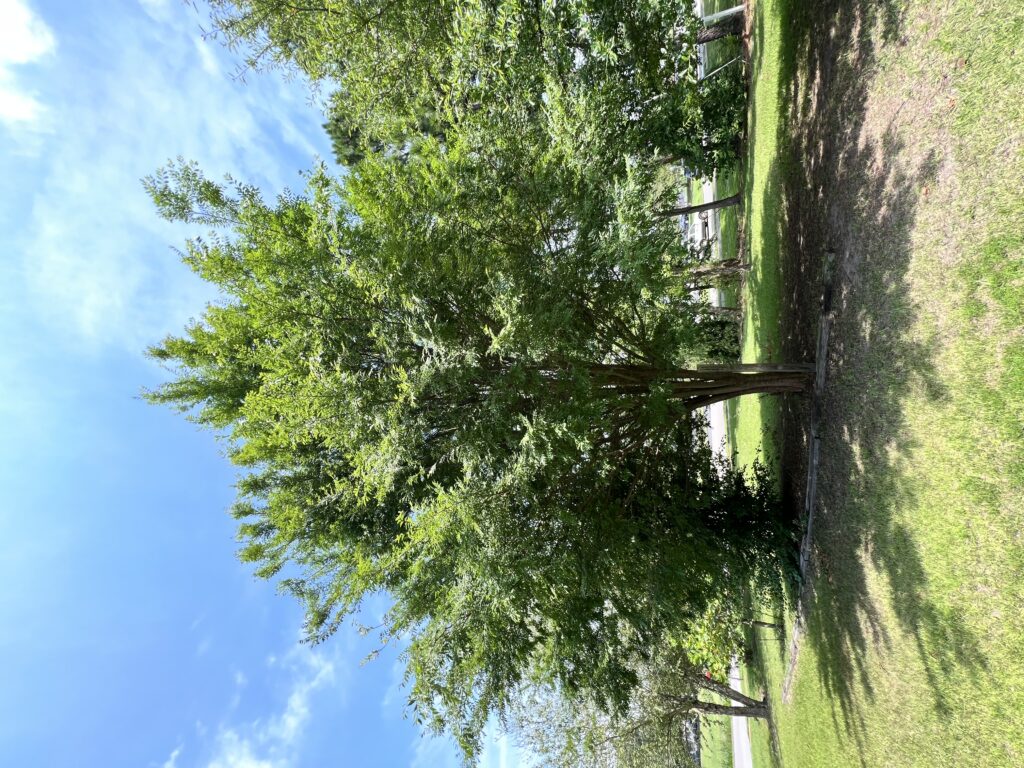
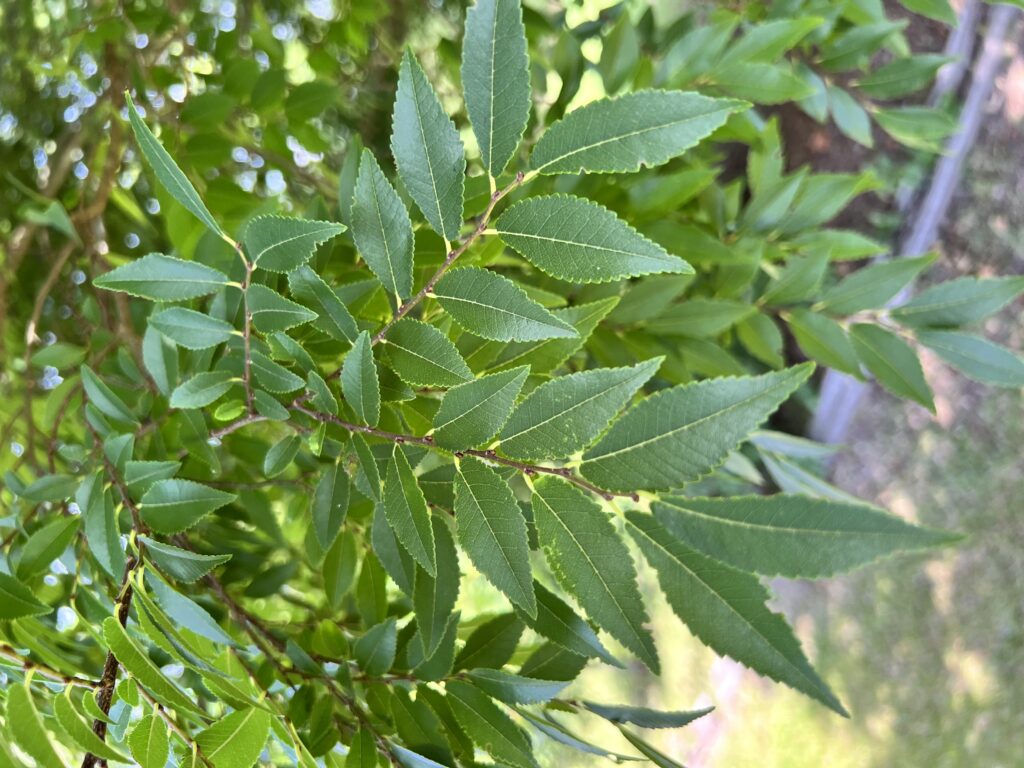
11. River Birch
Other Common Name(s): Black Birch, Red Birch, Water Birch
Scientific Name: Betula nigra
The River Birch is a native deciduous tree that has multi-trunked exfoliating bark. The papery bark peels away year-round, making its outward appearance go from cinnamon-brown to either very light or dark. It can get 30 to 70 feet in height, with widths of 40 to 60 feet. The River Birch likes wet areas with moist soils that are sandy, acidic, or even rocky well-drained loam. It also prefers full sun to partial shade, but full sun is when the foliage does the best. This flowering tree is known to be tolerate of extended periods of flooding and is resistant to wind.
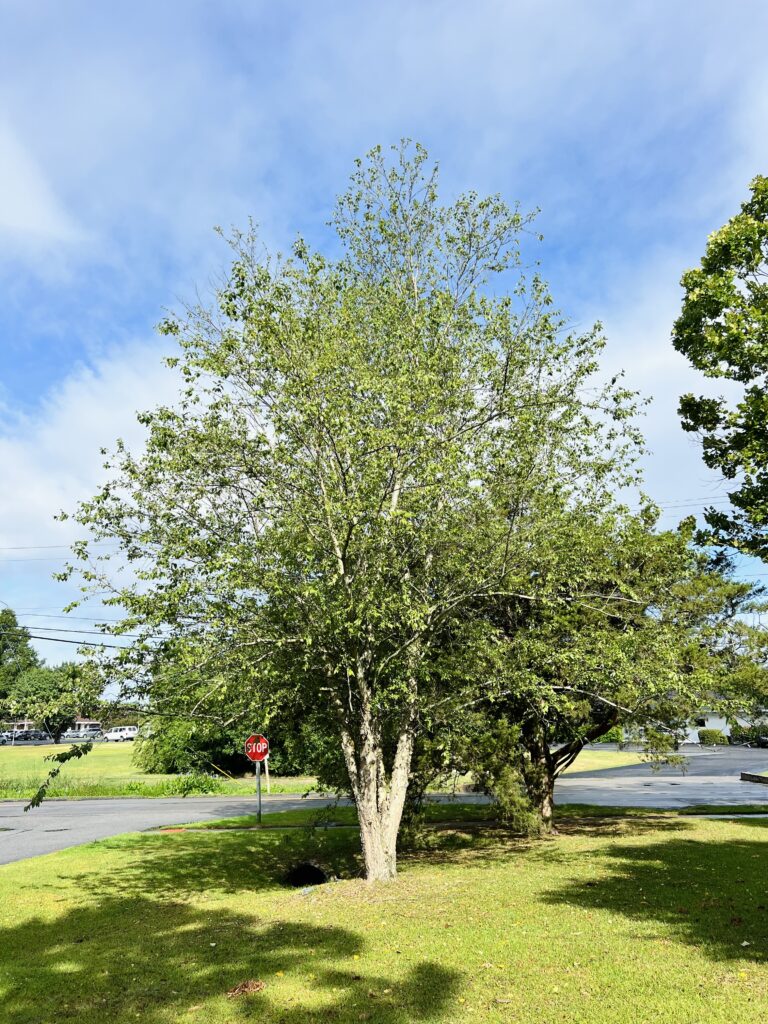

12. Sawtooth Oak
Other Common Name(s): Japanese Silkworm Oak, Sawthorn Oak
Scientific Name: Quercus acutissima
The Sawtooth Oak is a deciduous tree that is commonly planted for ornamental purposes and as a wildlife food source. This tree, which is considered to be medium-sized, can range from 40 to 60 feet in height, and can have widths of 30 to 50 feet. This tree has dark green, lustrous foliage during the spring and summer, while having foliage that is yellow to copper brown during fall months. For best growth, the Sawtooth Oak likes acidic, well-drained, and moist soils that contain organic matter. The Sawtooth Oak also likes full sun, and is tolerant of both heat and humidity.


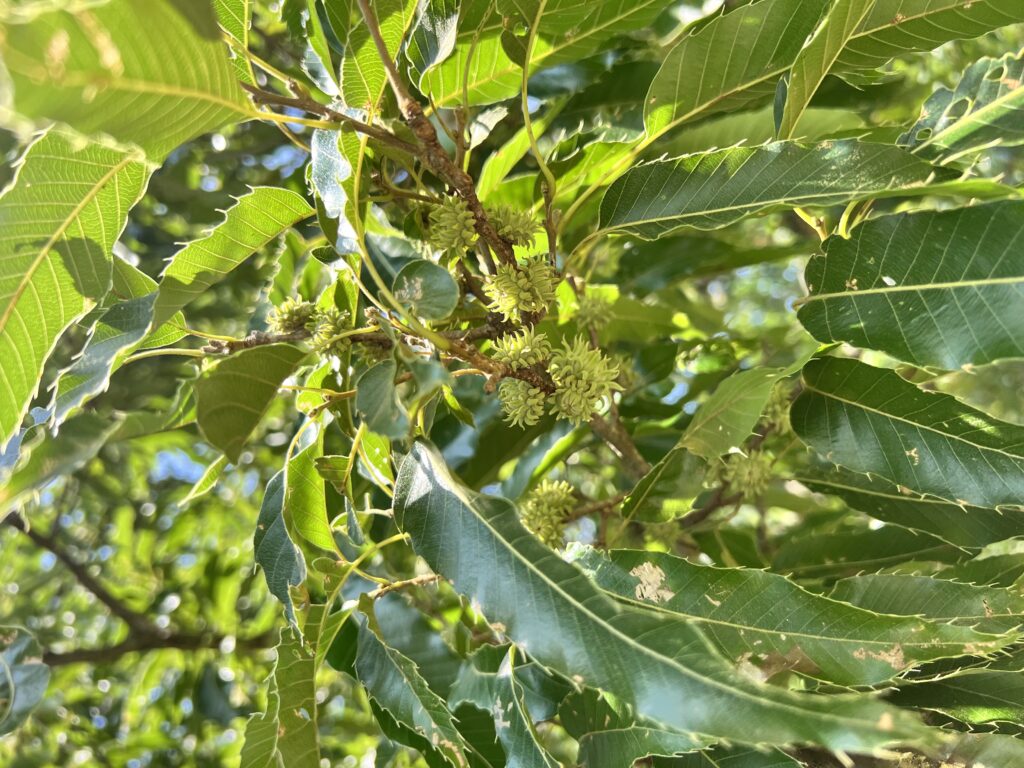
13. Chanticleer Pear
Other Common Name(s): Callery ‘Bradford’ Pear, Callery Pear, Bradford Pear
Scientific Name: Pyrus calleryana
The Chanticleer Pear is a deciduous tree that is best known for how it remains full of white blossoms during the spring, while also developing brown fruit following blooms. During the fall season, its foliage is colorful and variable. With the Chanticleer Pear, it is important to keep in mind that when in the peak of bloom, it has a foul odor. This tree can grow up to 50 feet tall and can reach a spread of 20 to 35 feet. Although very adaptable and drought tolerant, this tree prefers full to partial shade, loamy, and moist soils that are well-drained. Due to the weakness of the branches, it is recommended that Chanticleer Pear trees are pruned properly.
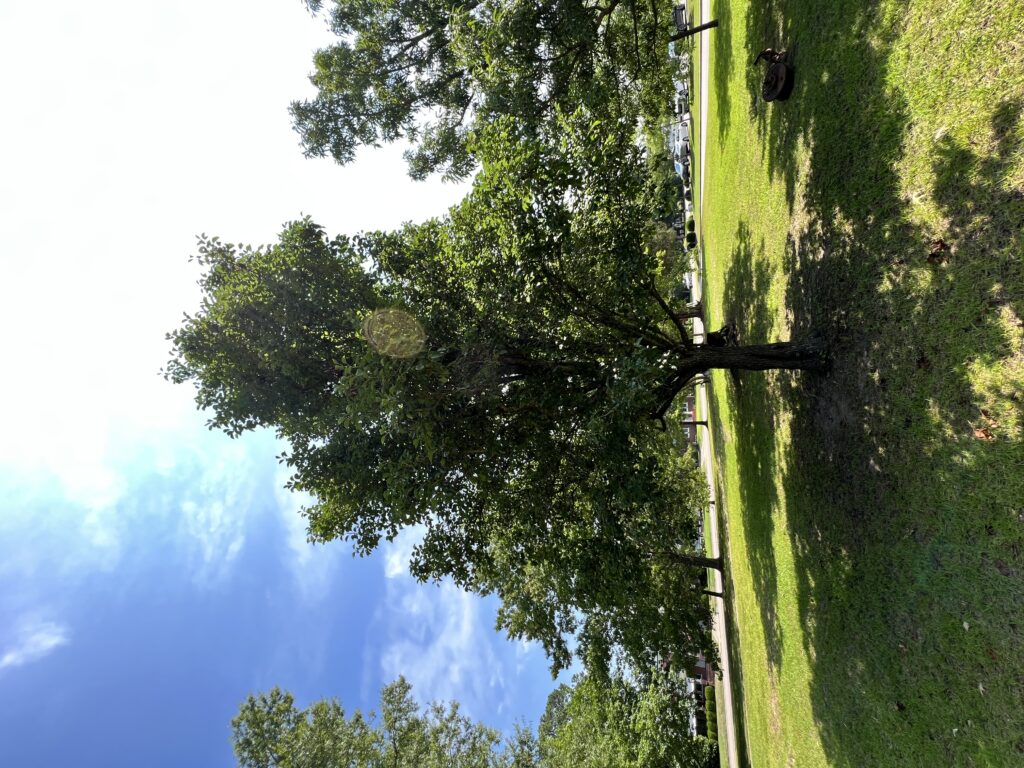
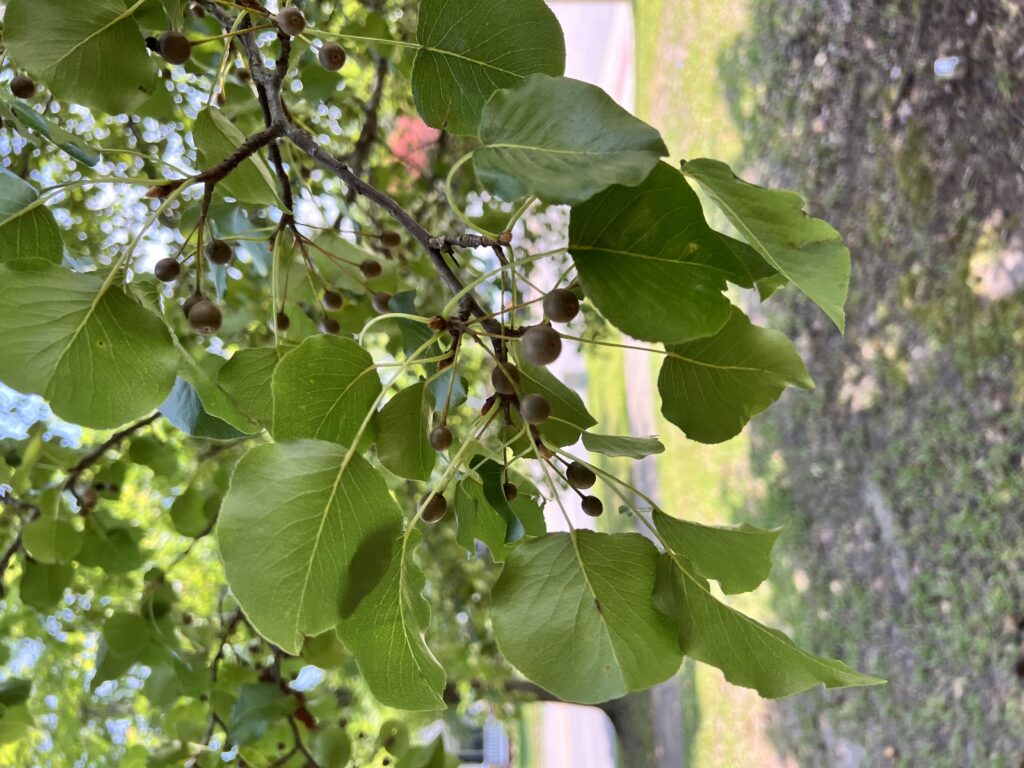
14. Willow Oak
Other Common Name(s): Oak
Scientific Name: Quercus phellos
The Willow Oak is a deciduous tree that can reach heights of 40 to 75 feet and widths of 25 to 50 feet. Since it is a long-living tree, it has been known to reach 100 feet in height. This particular oak is native to southeastern United States, and is a valuable tree for wildlife, which include a variety of Lepidopterans, birds and mammals. The Willow Oak grows best in acidic, medium to wet soils that are well-drained. It likes full sun, for six or more hours a day, to light shade.
15. Crape Myrtle
Other Common Name(s): Common Crape Myrtle, Crepe Flower, Crepe Myrtle, Indian Crape Myrtle, Lilac of the South
Scientific Name: Lagerstroemia indica
The Crape Myrtle is multi-stemmed, deciduous shrub or small tree that tends to be wide-spreading. It normally grows 6 to 30 feet in both height and width. The Crape Myrtle has exfoliating bark, and is favorited by many for its July to September bloom period. During the summer, this flowering shrub is full of showy blooms, while having beautiful fall foliage during the fall season. The Crape Myrtle grows best, and has the most successful blooms, in full sun and soil that is moist and well-drained. It is known to have the ability to grow in most soils, including sand, loam or clay.
16. Crabapple
Other Common Name(s): Flowering Crabapple
Scientific Name: Malus hybrids
The Crabapple is a deciduous tree or shrub that blooms early to mid part of the spring season. It can grow up to 26 feet in height, and it known to be quite showy during a short time while blooming in spring. The Crabapple is also known to change color throughout each life stage. For example, new growth is reddish while mature leaves are green. It also grows red fruit, which typically gets up to 2 inches in size. This tree/shrub prefers full sun, and a soil environment that is well-drained, slightly acidic, and moist.
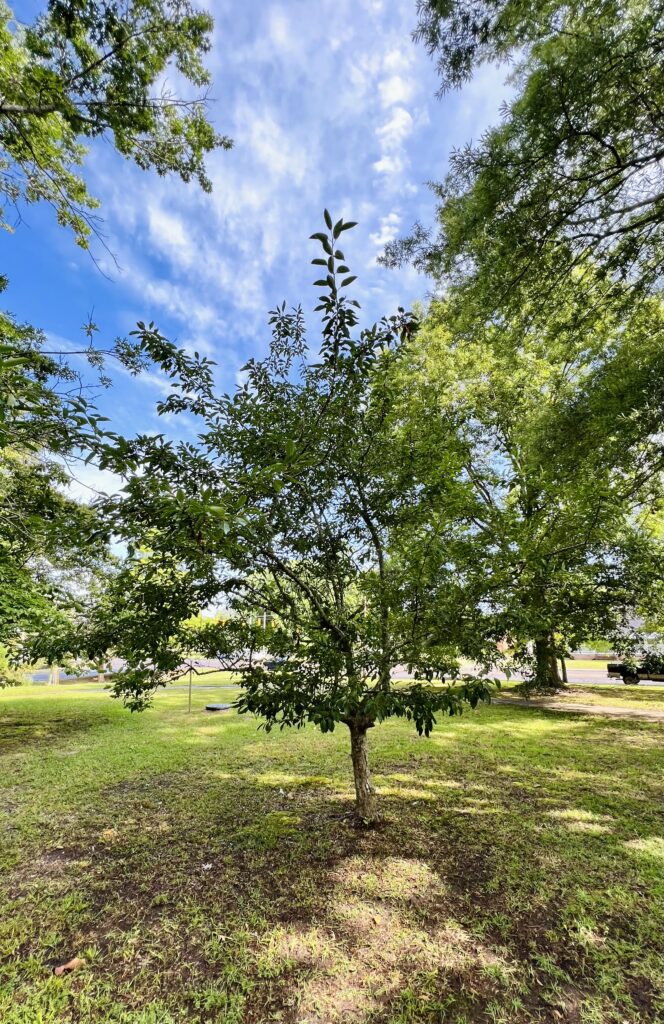
17. Pin Oak
Other Common Name(s): Swamp Oak, Swamp Spanish Oak, Oak
Scientific Name: Quercus palustris
The Pin Oak is a deciduous tree that, with its medium size, can grow anywhere from 50 to 70 feet tall. Due to its native habitat, including marshes and swamps, it prefers loamy, acidic and medium to wet soil and full sunlight. It has shallow roots, and can tolerate moderate flooding and some poorly drained soil habitats. The Pin Oak is popular for being used as a shade tree, and can tolerate severe heat and air pollution. Recommend not locating these too close to a horse pasture, as this tree is toxic to horses.
18. London Plane Tree
Other Common Name(s): London Planetree, Maple Leaved Plane Tree
Scientific Name: Platanus x acerifolia
The London Plane Tree is a deciduous shade tree that can grow 70 to 100 feet in height and can get 60 to 75 feet in width. This large tree is pyramidal when young, but spreads out as it ages over time and has exfoliating bark. In the spring, clusters of non-showy flowers bloom. The male flowers of the London Plane Tree are yellow, and the reddish female flowers produce a fruit. The fuzzy, round fruit turns brown in October as they ripen and persists throughout the winter months. The London Plane Tree likes full sun and soils that are well-drained, while also remaining in the medium to wet range. It can tolerate clay, faint shade, deer, and pollution caused by urban areas.
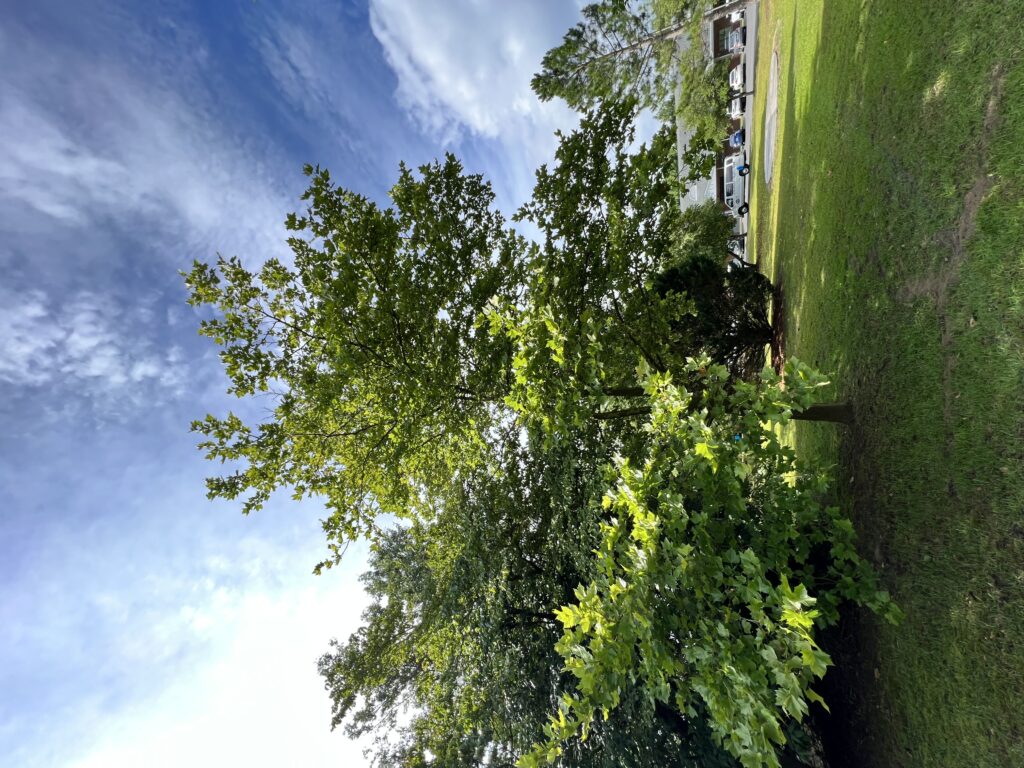
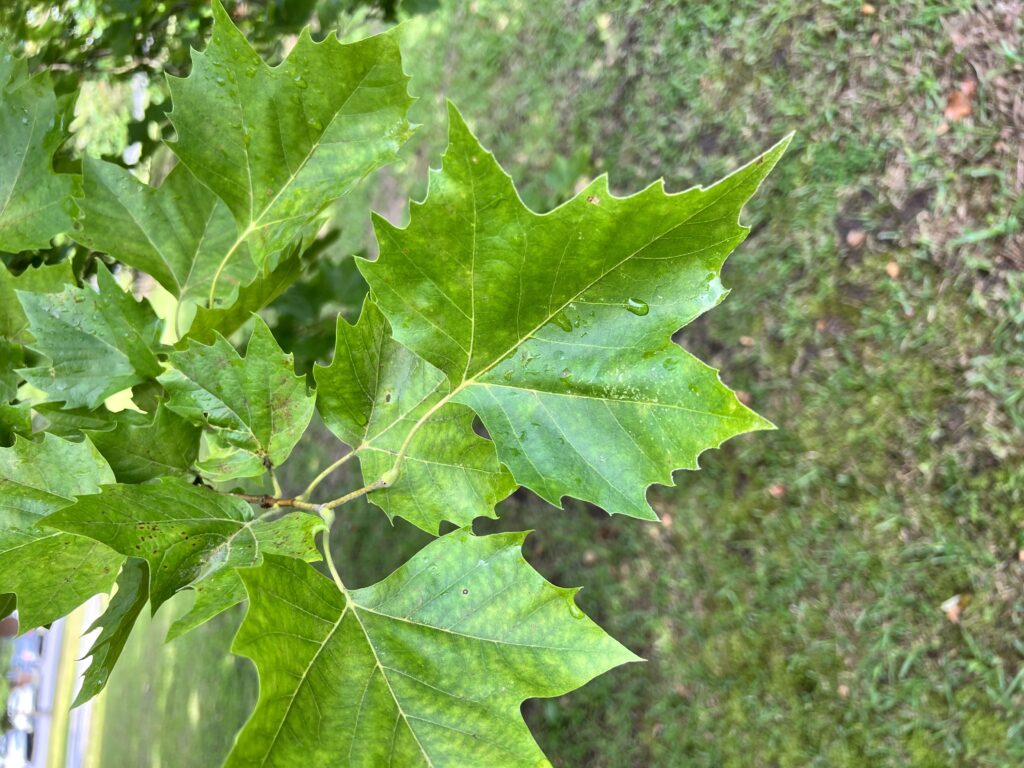
19. Saucer Magnolia
Scientific Name: Magnolia x soulangeana
The Saucer Magnolia is a hybrid, deciduous tree that can also be grown as a shrub, and can grow up to 33 feet tall. It likes acidic, loamy, organic-rich soil that maintains moisture in a well-drained environment. The Saucer Magnolia also likes full sun to light shade. During late winter and early spring, before leaves appear, there will be white-pink to purple-pink flowers in bloom. This multi-stemmed tree needs plenty of room, as it has a fleshy root system. While the Saucer Magnolia can tolerate pollution, it needs protection from late frosts.
20. Southern Magnolia
Other Common Name(s): Bull Bay, Large Tree Magnolia
Scientific Name: Magnolia grandiflora
The Southern Magnolia is a broadleaf evergreen tree that is best known for the glossy, dark green vibrant leaves, along with its large and very fragrant creamy white flowers throughout summer. This tree produces bright red seeds, located throughout its brown fruit. This large, native tree can grow 60 to 80 feet in height and will spread 20 to 40 feet. The Southern Magnolia thrives best in rich soils, associated with partial shade. It will tolerate high soil moisture, but only to a certain extent. The Southern Magnolia has heavy limbs that are full of leaves, so it is best to keep it well-maintain when grown as an ornamental. This tree is also known to produces a lot of debris.
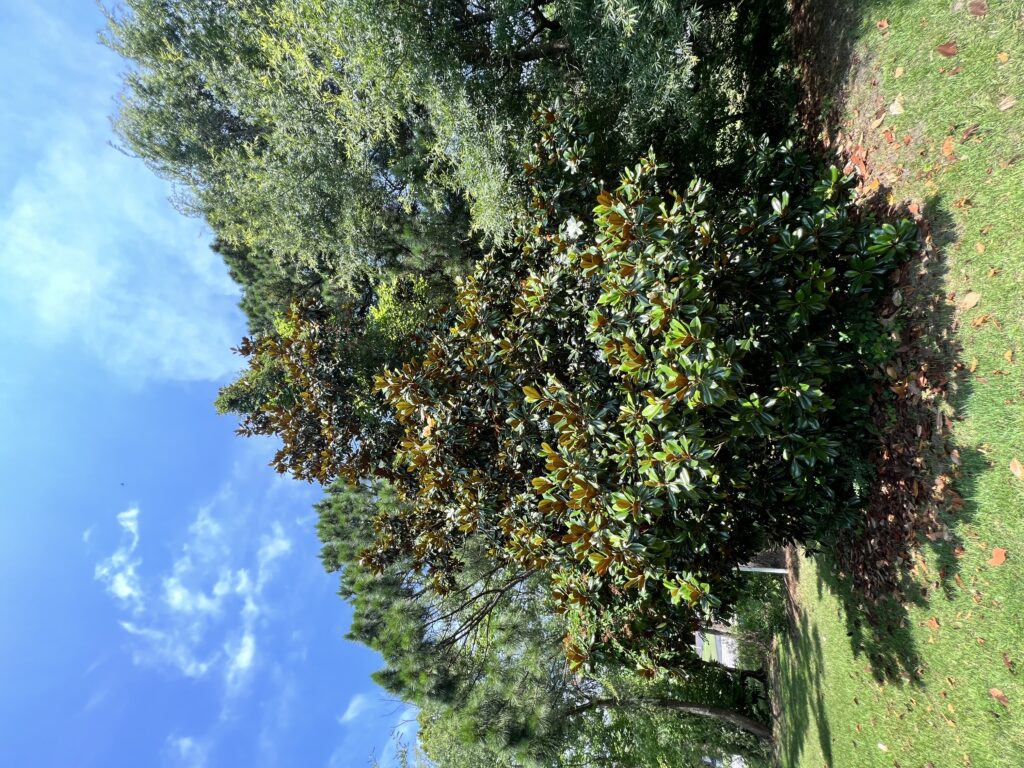
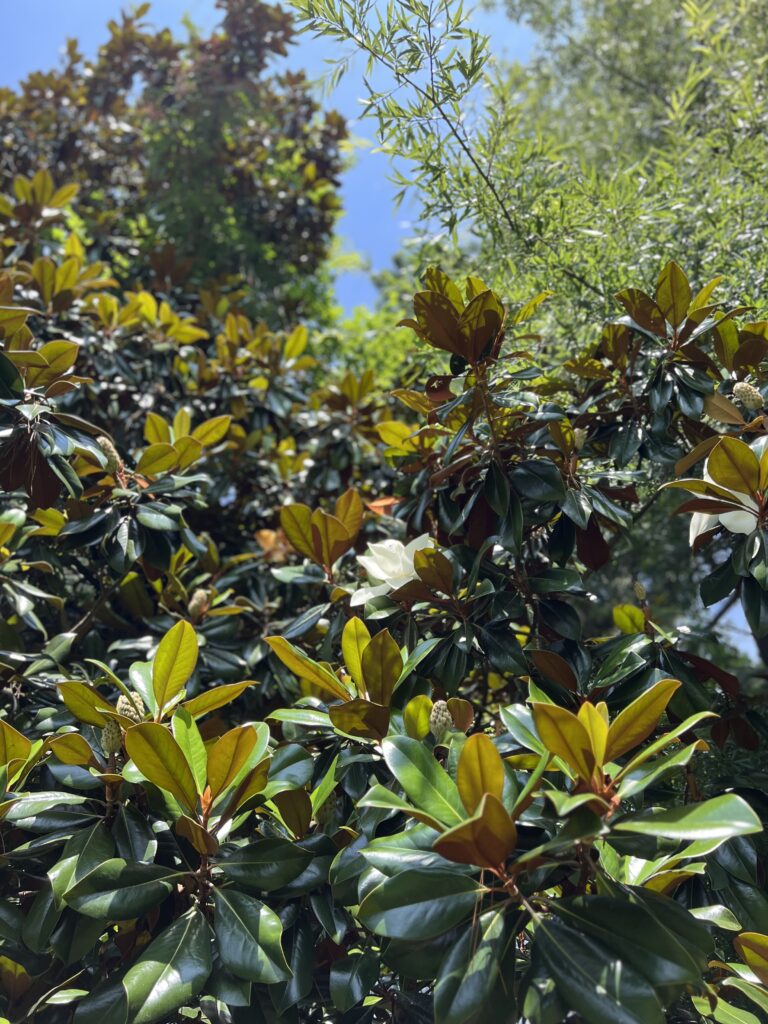
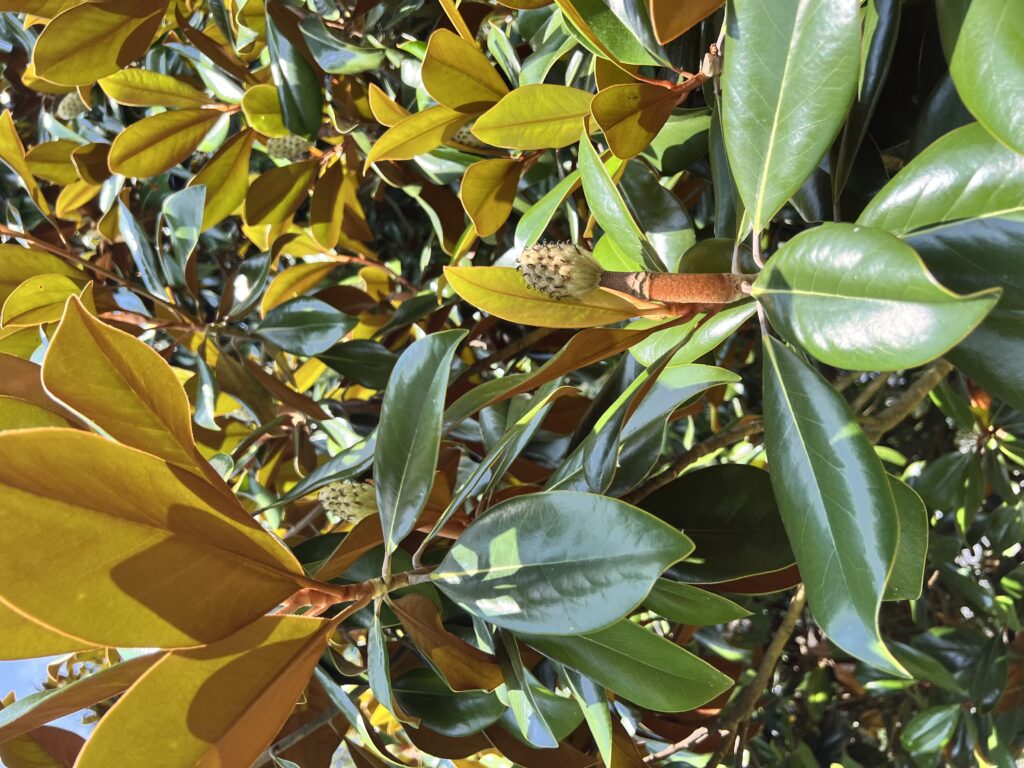
21. Longleaf Pine
Other Common Name(s): Long-leaf Pine, Southern Pine
Scientific Name: Pinus palustris
The Longleaf Pine is an evergreen tree that can grow anywhere from 60 to 120 feet in height. This gymnosperm has the largest cone of any pine tree in eastern North America, and produces male cones that are purple-blue in color and female cones that are dark purple. The Longleaf Pine likes full sun, soil that is acidic, clay-like, or sandy, and well-drained. This tree is currently used mostly for lumbar, as the wood is durable and heavy. It also is a habitat and food source during the winter months for wildlife, while being home to the red-cockaded woodpecker; a species of woodpecker that is endangered.
22. Bald Cypress
Other Common Name(s): Cypress, Baldcypress, Swamp Cypress
Scientific Name: Taxodium distichum
The Bald Cypress is a native, deciduous conifer that can grow 50 to 70 feet in height and can spread from 20 to 30 feet. It likes acidic, sandy soils that are moist, but can tolerate dry soils and those located in standing water. The Bald Cypress can grow reasonably in full sun to part shade, while located in well-drained soils. When grown near or in water, conical “knees” develop from the roots.
Located right by the Bald Cypress is this sign, which is meant to illustrate that this tree was planted to honor some very special individuals. Specifically, this Bald Cypress was planted to honor those who lost their lives serving others during the 9/11 terrorist attack on the United States. It reads: “This tree was planted February 16, 2002 as a lasting memorial to those lost to terrorist attach in New York City; Arlington, VA; and Pennsylvania, on September 11, 2001. Today, it stands in honor of our Soldiers, Firefighters, Rescue Workers and Law Enforcement Officers who protect and serve.”
23. Norway Maple
Other Common Name(s): Harlequin Maple
Scientific Name: Acer platanoides
The Norway Maple is a deciduous tree that can get up to 50 feet it both height and width. This shade tree grows best in full sun to partial shade, and in well-drained soils at a moisture level of medium. It tolerates heat, urban areas, and a wide variety of soil types. It is best to plant a Norway Maple in solitary, as its shallow roots makes it difficult when planting nearby.
24. Nuttall Oak
Other Common Name(s): Oak, Shumard Oak, Texas Red Oak
Scientific Name: Quercus texana
The Nuttall Oak is a deciduous tree that has rich green leaves in the summer, and red-orange foliage throughout the fall. It can grow up to 80 feet tall and to a spread of 50 to 60 feet. One unique fact about the Nuttall Oak, is that the form its canopy is known to resemble the Red Oak. The Nuttall Oak prefers full sun and low moisture, but is adaptable to urban areas, and once established becomes drought tolerant. This oak attracts a wide variety of wildlife, which includes moth and butterfly larvae, small mammals, and birds.

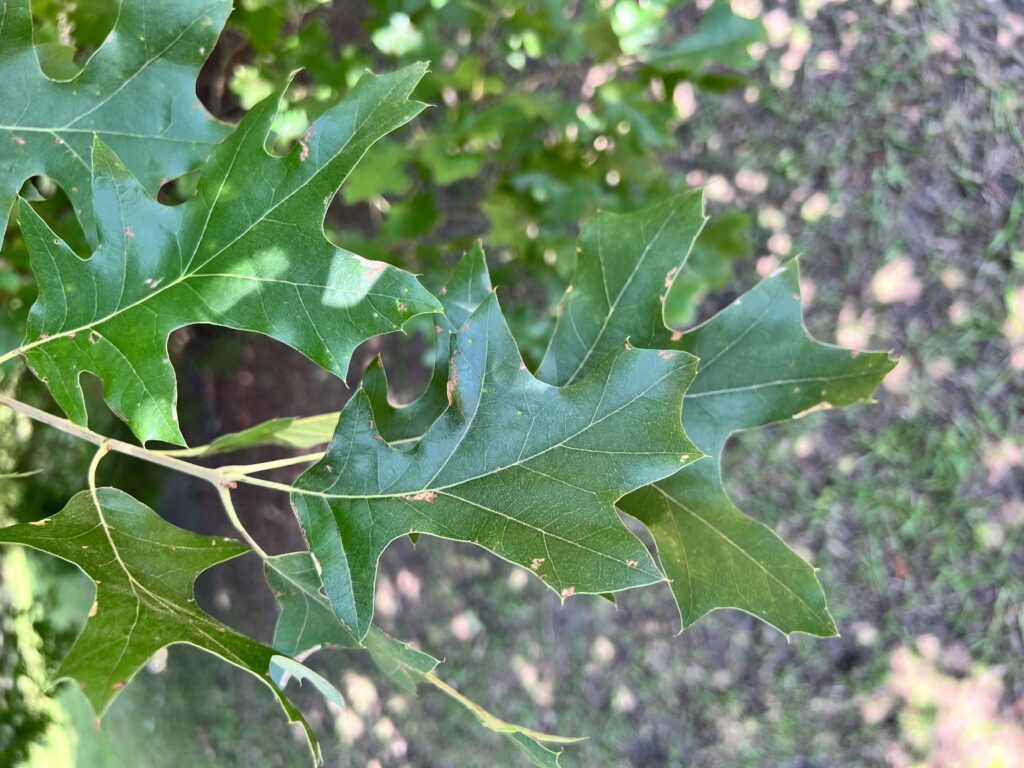
25. Honey Locust
Other Common Name(s): Common Honey Locust, Honey Shucks Locust, Sweet Bean Tree, Sweet Locust, Thorny Locust
Scientific Name: Gleditsia triacanthos
The Honey Locust is a large deciduous tree that can reach heights of 80 feet and casts light shade. This sun-loving tree likes high amounts of organic matter, and soil that is well drained and moist. Once established, it is tolerant of sever drought, high salt levels, and increased wind levels, while being deer and pollution resistant as well. The Honey Locust grows seed pods, which contain edible pulp that attracts moths, bees, butterflies, and small mammals.
